If, like me, you’ve spent countless hours immersed in wildlife documentaries which showcase the natural wonder of the Great Wildebeest Migration, there’s a high chance that witnessing this exhilarating spectacle is on your bucket list.
Choosing which month to visit Tanzania is an extremely important decision as it will impact how much wildlife you see and whether you’ll view key events such as the great migration river crossings or calving season.
August Ratings Overview
Below are August’s ratings for wildlife, the great wildebeest migration, Zanzibar, busyness, and weather.
- Excellent
- Good
- OK
- Poor
Wildlife
Migration
Zanzibar
Busyness
Weather
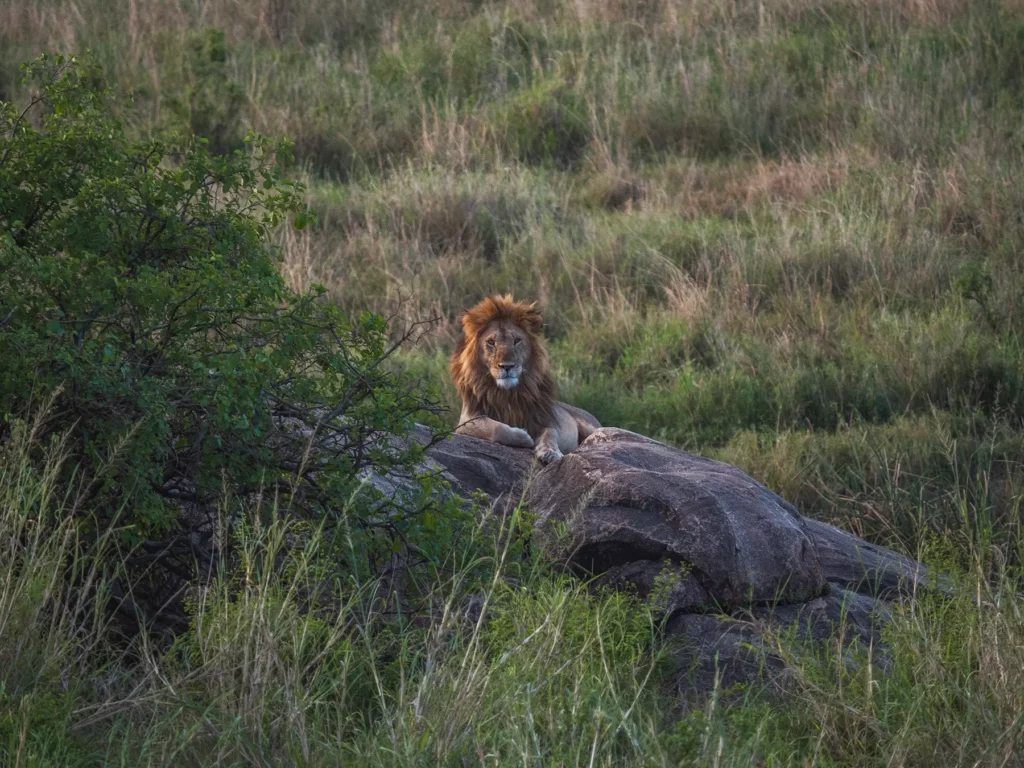
Being the height of summer in the northern hemisphere, August is an extremely popular month to visit Tanzania as it coincides with the school holidays. But is it a good time of year to visit?
In this article I aim to tell you everything you need to know about visiting Tanzania in August and if I recommend it.
First thing’s first!
Is August a Good Time to Visit Tanzania?
The quick answer to that question would be a resounding yes – and for a number of good reasons too. The weather during August is brilliant across the entire country and is less humid with very little rain and the numbers of mozzies are at their lowest, greatly reducing the risk of malaria.
Inland, the game parks are teeming with wildlife, the Great Migration is in full swing in Northern Serengeti National Park, with the great herds of wildebeest crossing the crocodile-infested Mara River, and the dry weather and mild temperatures make it an ideal time to hike Mount Meru and climb Kilimanjaro.
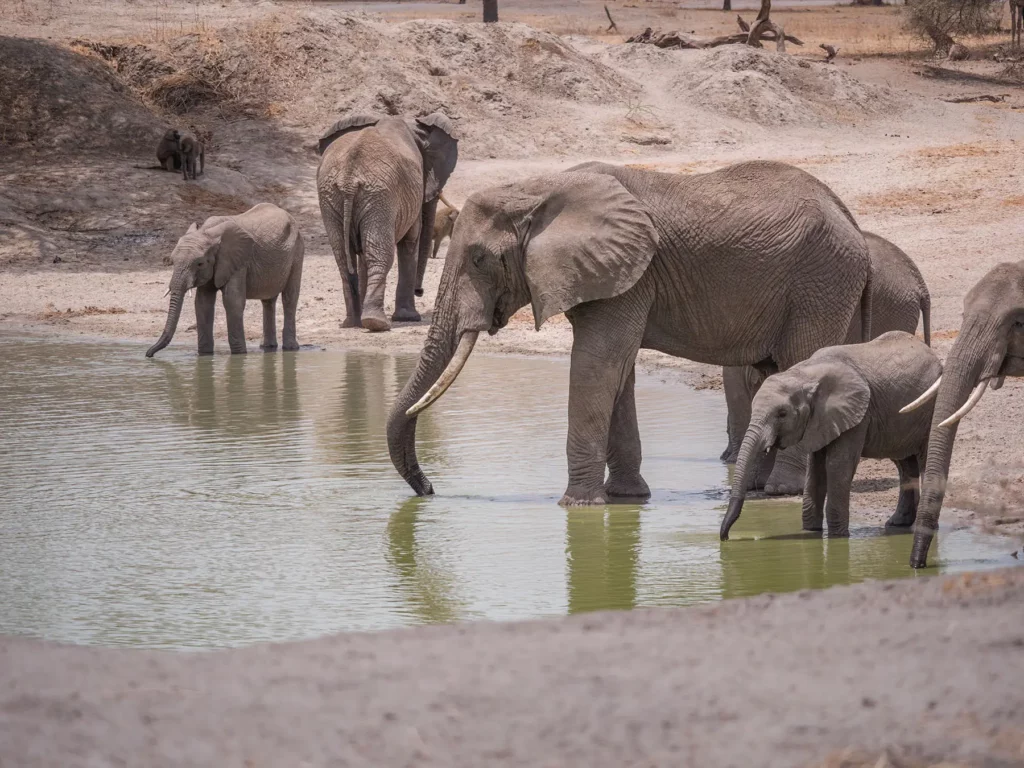
Along the coast and the Zanzibar Islands, the skies are blue and the sea is calm, perfect for spending long lazy days on the long, white sandy beaches or snorkelling in the crystal clear waters of the Indian Ocean.
So, yes, August is indeed a very good time to visit Tanzania.
Unfortunately all this comes at a price, and as August is the most popular month of the year for visitors to Tanzania, safari prices are much higher, and parks and beaches are at their busiest. On the positive side, the game parks are vast and as busy as they may get, there are numerous secluded spots where you won’t find a soul.
This is a brief overview of Tanzania in August. However I will go into much more detail throughout this article.
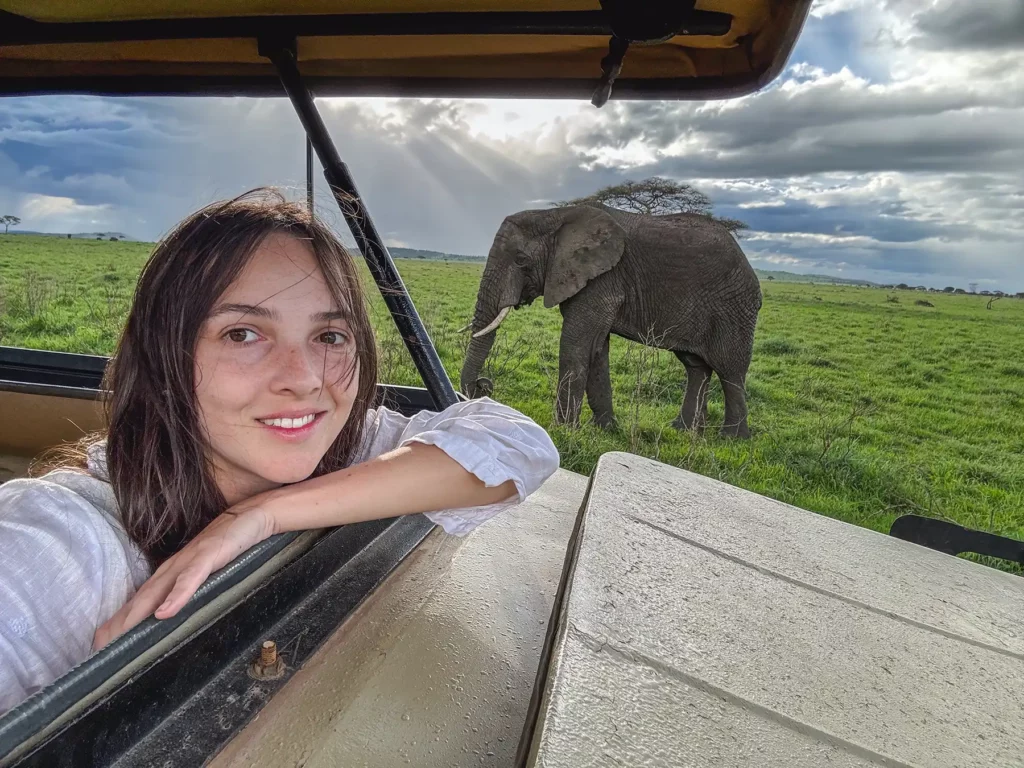
Embark on the Safari of Your Dreams
Save time and ensure an incredible safari experience by getting quotes from my recommended local safari companies
I’m here to make booking your perfect safari quick, easy and risk-free.
Join the rapidly growing tribe of over 1,000 travellers who’ve booked their dream safari using my insider tips and recommendations.

It takes under 60 seconds to fill out the form and in under 48 hours you will receive multiple, no-obligation proposals from my favourite local tour operators with glowing online reviews.
Get your free no-obligation safari quotes and my top safari tips and recommendations
In This Guide
- Weather in Tanzania in August
- Is August Good for a Safari in Tanzania?
- Where is the Great Wildebeest Migration in August?
- Is August a Good Time to Visit Zanzibar?
- Is August a Good Time to Hike Kilimanjaro?
- Is August a Good Time for Birding in Tanzania?
- Events in Tanzania in August
- Costs of Visiting Tanzania in August
- Best Places to Go on Safari in Tanzania in August
- Best Itineraries for Tanzania in August
- Final Thoughts
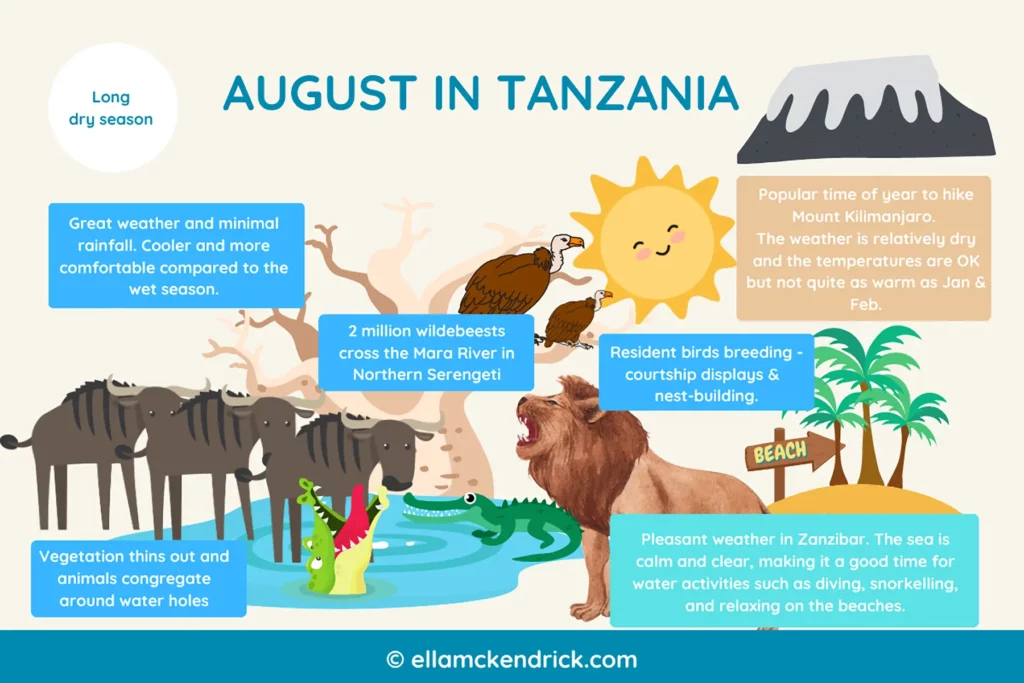
Weather in Tanzania in August
August is the middle of the long dry season, which actually makes it a little cooler and more comfortable than during the wet season. It’s in fact one of the coolest times of year to visit Tanzania.
Along the coast and on the islands, temperatures remain mild and ideal for beach activities. The temperature normally hovers around 25°C but can rise to 30°C at times.
Similar conditions can be expected inland in the central regions, although the nights and early mornings can get a little chilly. The northern regions (including Ngorongoro) are considerably cooler during the days, but temperatures can plummet to around 10°C at night, making it necessary to pack some warm clothing too.
Kilimanjaro is a totally different kettle of fish, where you will experience multi-climates on your 7-9 day trek, no matter when you go. From warm tropical conditions at the base, to sub-zero arctic conditions at the summit. Climbing Kilimanjaro requires serious preparations and conditioning, and although many people in reasonably healthy condition summit it each month, it is no walk in the park either.
Overall, the favourable and stable weather during August in Tanzania makes it an ideal time to visit the country, regardless whether you’re heading to the mountains, the game parks or the coast.
| Tanzania location | Daytime temperatures | Nighttime temperatures |
|---|---|---|
| Coastal Areas (e.g., Dar es Salaam, Zanzibar): | 25°C to 30°C (77°F to 86°F) | 20°C to 24°C (68°F to 75°F) |
| Northern Safari Circuit (e.g., Arusha, Serengeti, Ngorongoro): | 20°C to 25°C (68°F to 77°F) | 10°C to 15°C (50°F to 59°F) |
| Southern and Western Tanzania (e.g., Selous, Ruaha, Katavi) | 25°C to 30°C (77°F to 86°F) | 15°C to 20°C (59°F to 68°F). |
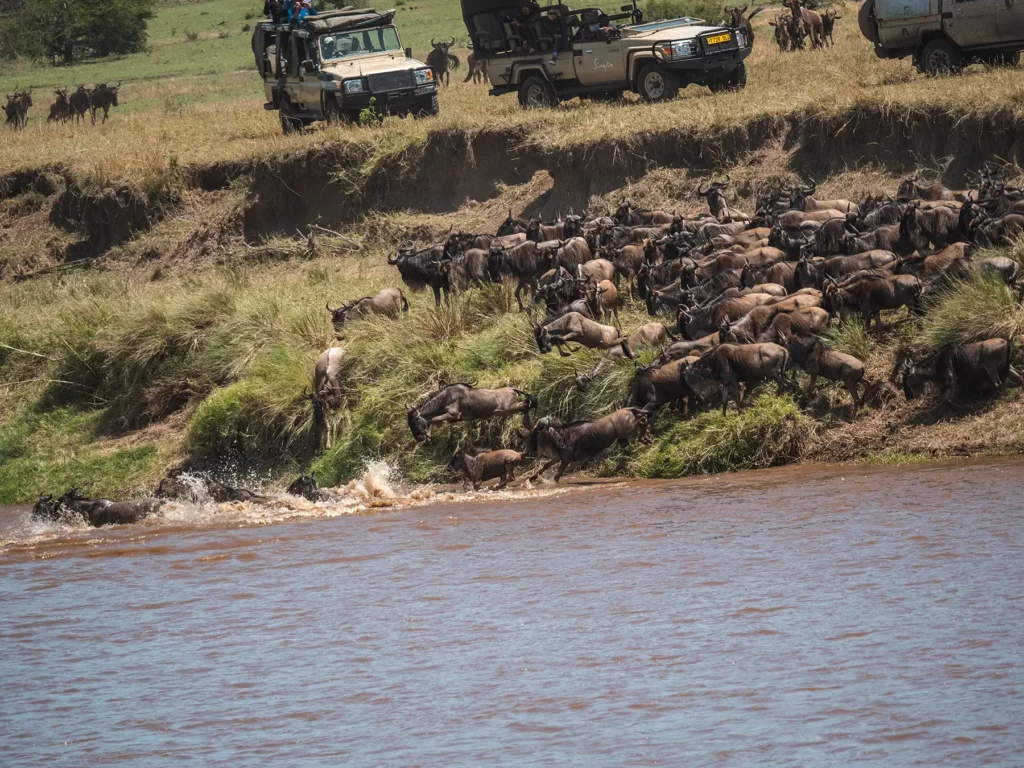
Is August Good for a Safari in Tanzania?
Absolutely! Apart from being the busiest and costliest period, game viewing during August is still out of this world. The vastness of the Serengeti, Tarangire and other National Parks make it easy to find secluded areas, escaping from the convoys of safari trucks that abound during the high season, and allow viewing the wildlife in complete solitude.
One benefit of visiting in busy periods is, with more cars searching for wildlife, you’re more likely to get more calls on the radio alerting you to a fantastic wildlife sighting. You’re not solely reliant on your guide’s tracking skills at this time of year.
With August being in the second half of the long dry season, it means that the grasses are short and vegetation is less dense making wildlife easier to spot. The animals also tend to hang out around the river banks and waterholes, making them even easier to find.
And then of course, we have the Great Wildebeest Migration, which is regarded as the ultimate natural spectacle to witness. The northern regions of the Serengeti provide the best wildlife viewing during August, as the migratory herds are here in their millions, bringing with them all the big cats and other predators like hyenas, thus increasing your chances of seeing them in action and perhaps witnessing a kill right in front of your eyes.

Save Time and Ensure an Incredible Safari Experience
Get quotes from the local safari companies I use to organise my own trips.
You’ll join the rapidly growing tribe of over 1,000 travellers who’ve booked their dream safari using my insider tips and recommendations.
Where is the Great Wildebeest Migration in August?
By August, millions of wildebeest, zebras and various gazelle species are galloping through the northern section of the Serengeti and some may have already crossed the infamous Mara River and into Kenya.
After being continually attacked by lions, leopards, cheetahs and hyenas along their perilous 1,000 kilometre journey, the herds now need to run the gauntlet and cross the Mara River in which thousands of hungry crocs gather here every year in anticipation of the feast to come. Some of these crocodiles have not had a meal for months or even up to a year, so they are pretty hungry.
Crocs taken out of the equation, the river is a danger in itself. Its strung currents drown around 6,000 individual wildebeest each year, which although sounds utterly tragic, the death of these animals contributes positively to biodiversity within the river itself – the true meaning of the circle of life.
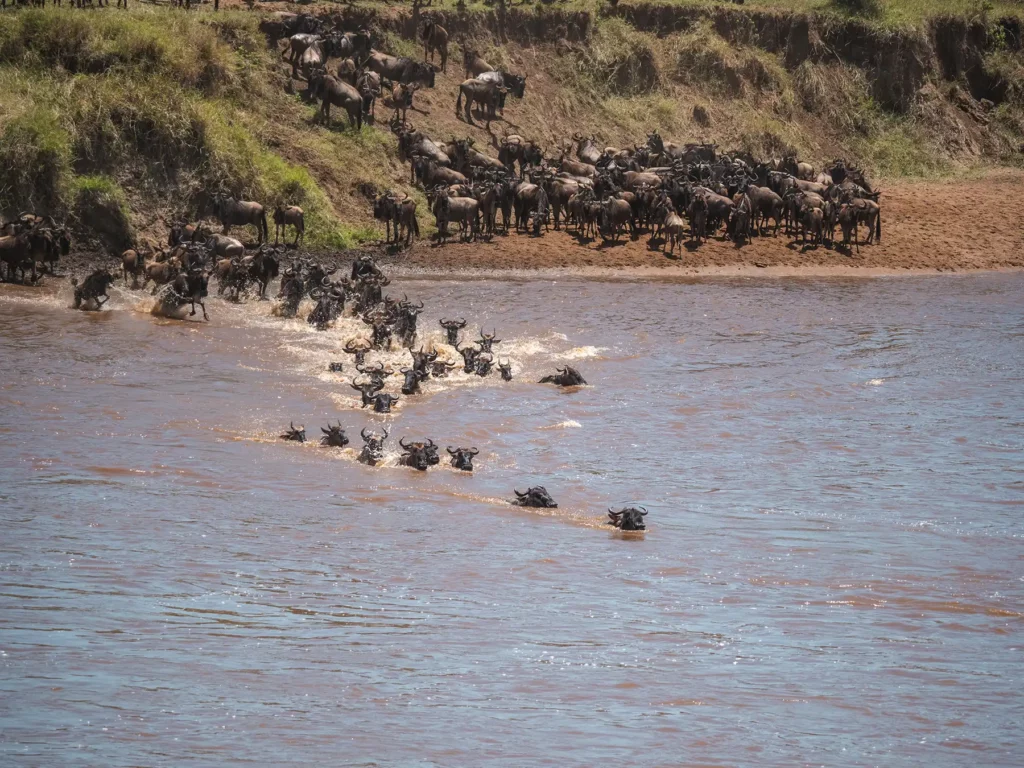
Most tour operators take their guests to their favourite spots along the river banks, notoriously famous for viewing the carnage that ensues throughout August. And to think that within a few months, the herds will have to cross this river once again on their southward bound return journey.
August is perhaps the best month to try to catch a glimpse of the great herds crossing the Mara River. However, a sighting of the event is never guaranteed.
The timing of the rains is the key factor in prompting the wildebeest to migrate, and if the rains come early or late, this changes their schedule and means they’ll reach the Mara River at a different time.
Additionally, the herds are rightly nervous to cross the Mara River and groups can spend hours milling on the riverbank, deciding whether or not to cross. It’s all a game of patience as you never know when that one wildebeest will be bold enough to take the plunge, followed by hundreds more. The river crossings only last a few minutes at a time and can stop as quickly as they started.
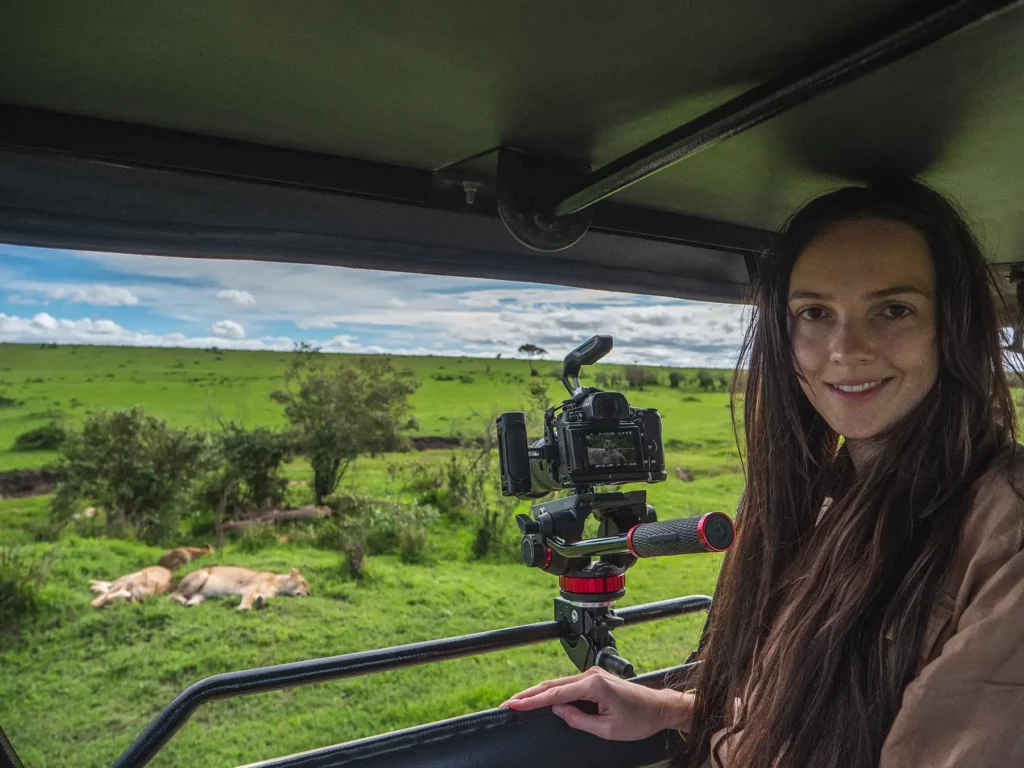
Is August a Good Time to Visit Zanzibar?
When visiting any tropical island paradise, the four basic requirements are sunny skies, no wind, no rain and calm blue water, and that’s exactly what you can expect to find in Zanzibar in August.
Apart from being the heart of the high-season where prices of everything are sky high and certain beaches and resorts get crowded, there are no other negatives to visiting Zanzibar during August.
Fortunately, the Zanzibar Archipelago consists of three main islands and numerous other smaller islets, providing hundreds of kilometres of secluded coves, pristine sandbanks and beaches to escape the madding crowds.
The seas are at their calmest, with clear blue water, perfect for snorkelling, scuba diving, kayaking, swimming or just soaking in the sun, which are basically what most people come here for.
There is a vast selection of accommodation joints scattered across all the main islands, from the most extravagant resorts to basic rustic cabins on the water’s edge, hidden among the lush coastal vegetation.
August is also a good time to explore Stone Town, the old historic sector of Zanzibar City, as temperatures usually hover around 20-30°C, a nice temperature as it’s not too hot.
If you’re visiting Tanzania in August then I’d strongly recommend a 7-10 day itinerary that incorporates both mainland Tanzania and Zanzibar.
| Location | Daytime temperatures | Nighttime temperatures |
|---|---|---|
| Zanzibar | 29°C to 31°C (84°F to 88°F) | 21°C to 23°C (70°F to 73°F) |
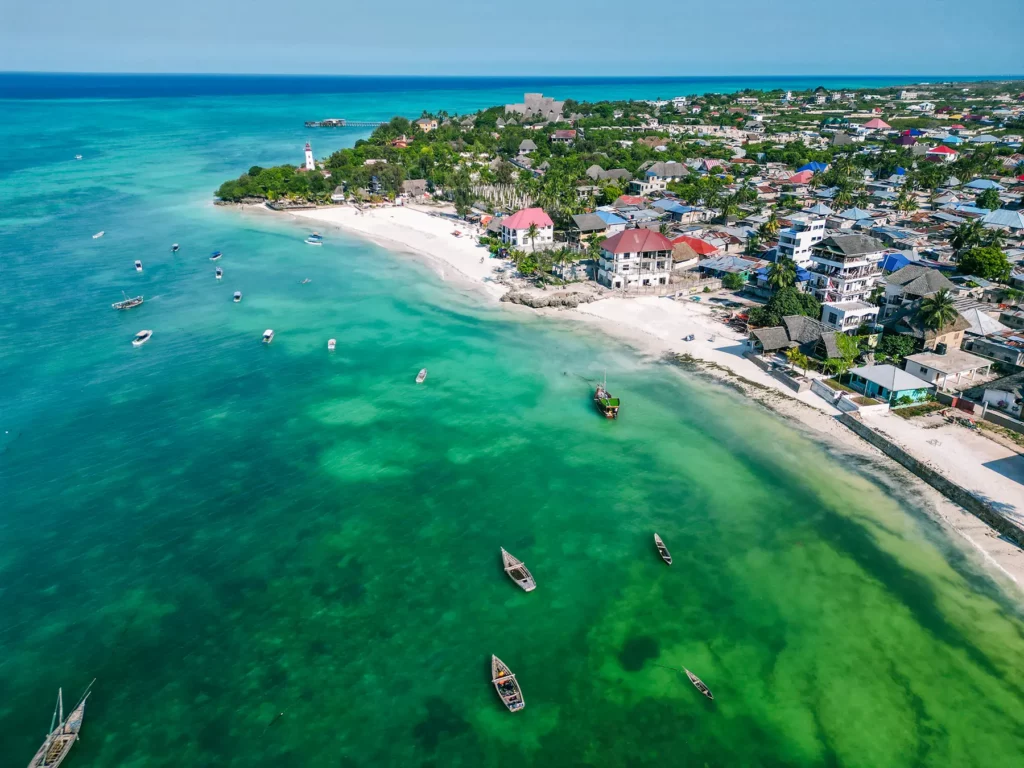
Is August a Good Time to Hike Kilimanjaro?
Being one of the driest months of the year makes August an excellent time to climb Mount Kilimanjaro, although it will be a lot colder at the summit and at nights than during any other time of year. But then again, it’s still going to be cold on the summit and you’re likely to experience every type of climate no matter what time of year you choose.
You’ll be passing through tropical rainforests, alpine desert and sub-zero arctic conditions on your multi-day hike up to the Roof of Africa. The only downside may be that it is also the busiest time of the year. There are however several routes to the summit, somewhat lessening the volume of traffic.
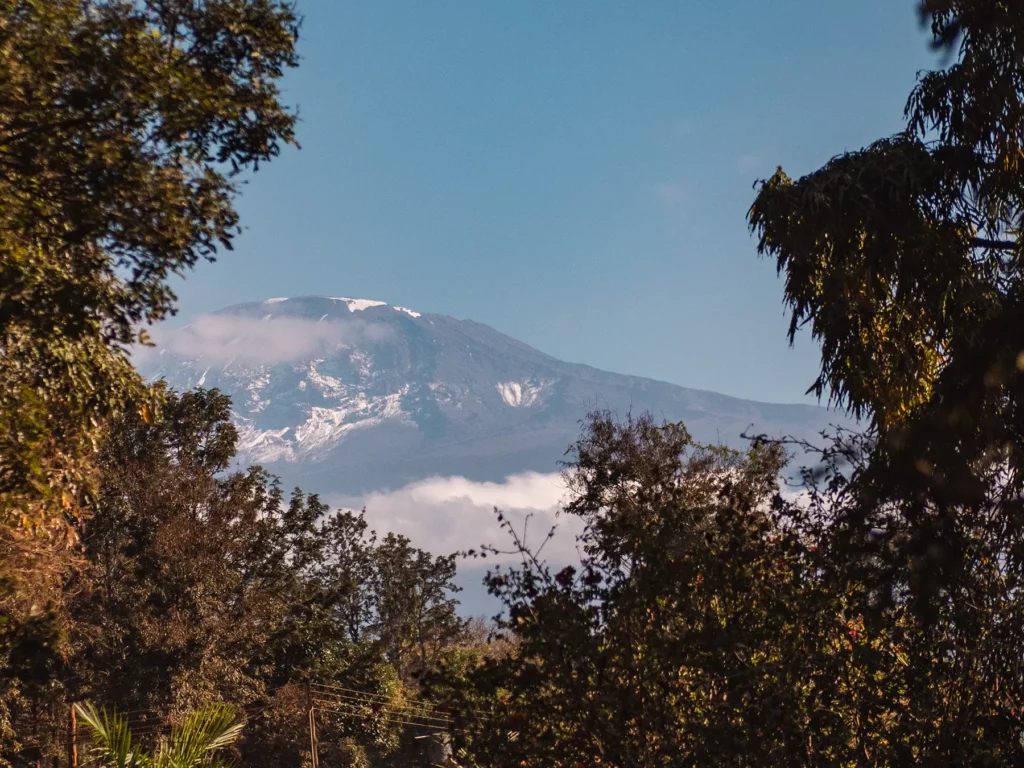
Is August a Good Time for Birding in Tanzania?
Although August may not be the best time for birders in Tanzania, it’s still pretty awesome. The country’s varied landscape of vast grasslands, lush tropical forests, mountains and wetlands sustains an incredible range of over 1,000 species of birds. The waterholes, rivers and countless lakes that dot the countryside and game parks are packed with thousands of water birds, including enormous colonies of lesser and greater pink flamingos.
The summer migratory species from the northern hemisphere, mainly Europe and Asia are still plentiful in August, while numerous endemic and some very rare and critically endangered species can be found across this entire pristine landscape virtually all year round. One such endangered species is the long-billed forest warbler, which is found in the Usambara Mountains in the north-eastern corner of the country. It is found nowhere else on earth. Serious birders will seek this character out.
There are also many other permanent residents which are fairly common in almost all the regions of Tanzania. These include the majestic fish eagle, the kleptomaniac tawny eagle, Tanzania’s national bird, the elegant crested crane, the comical and raucous hornbill, and everything from the tiniest and most exquisitely decorated sunbird to the world’s largest bird, the flightless ostrich.
Some of the best birding sites are within Tanzania’s premier national parks, such as the Serengeti, Ngorongoro and Tarangire. The dry weather and sparse foliage during the dry month of August makes for ideal bird spotting conditions.
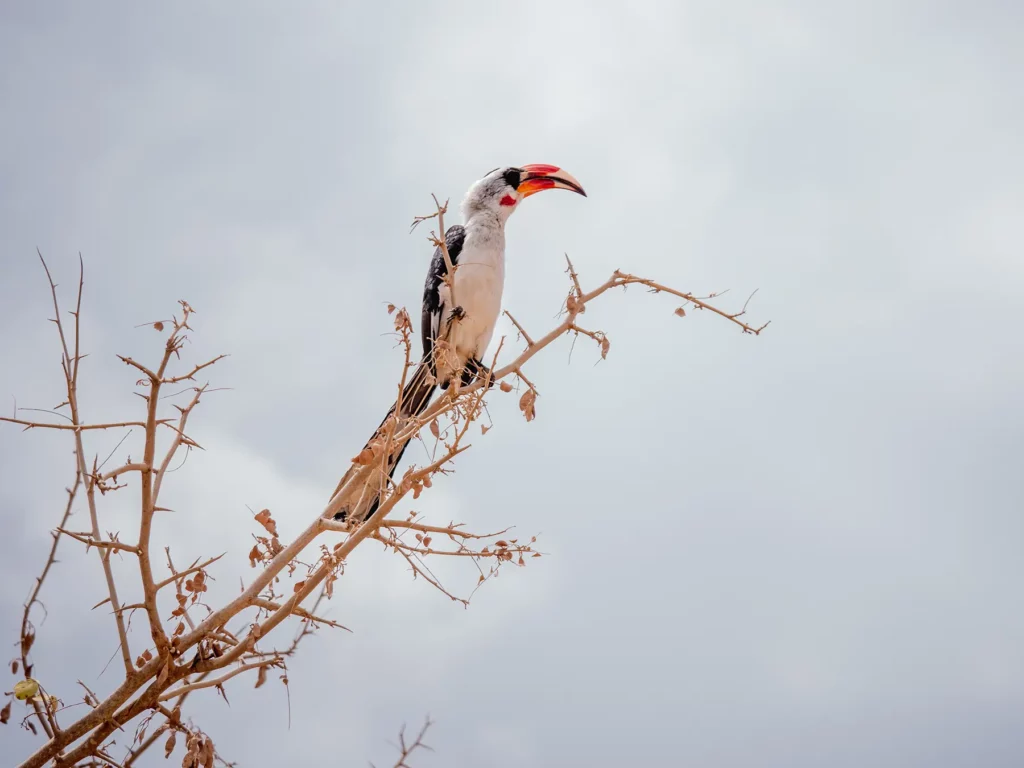
Events in Tanzania in August
Several annual events take place in Tanzania during August, which offer a welcome relief from days of trudging around the African bush.
One such event is the Mwaka Kogwa Festival. Dating back to their ancient Persian roots, this festival is a celebration of the Persian New Year that takes place in and around Zanzibar during late July and early August. The best place to witness this spectacle is in Zanzibar City but even better, in the small village of Makunduchi, situated on the southern tip of the main island.
There is much song and dance with the women dressing up in their best clothes and singing songs of family, love and joy while the men play-fight, beating each other with banana sticks to rid all aggression and misfortune they may have suffered during the past year. It all ends well and nobody dies, with a straw hut being set alight followed by a huge feast of traditional Swahili food and much drum beating well into the night. Everyone is welcome to join the festivities and nobody gets to sleep.
For the sailing fraternity, the Tanzacat Regatta is a more relaxing event that takes place in Dar es Salaam over a multi-day race to Zanzibar and the mainland. The trip will take you to remote sandbars in the archipelago for lunch and partying and staying overnight in the historic Stone Town and the Saadani National Park. This event is organised by the Dar es Salaam Sailing Club.
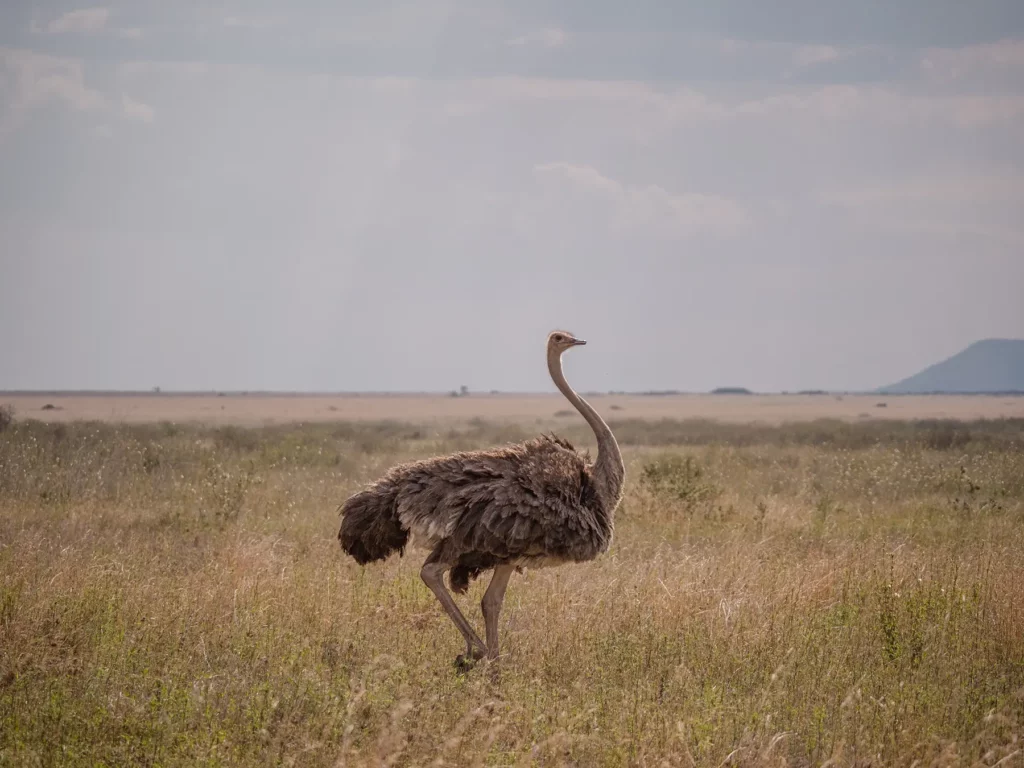
Costs of Visiting Tanzania in August
Costs of visiting Tanzania can vary significantly between game lodges, camps and between hotels and resorts along the coast or on the Zanzibar Islands. Length of stay, safari vehicle type and choice of itinerary also play a huge role.
August is peak season so costs of lodging, safari tours and flights will inevitably be at their highest.
In my experience, I have found that booking through a local safari agent is far cheaper than by going through any UK or US based travel agent. Depending on the style and level of comfort you prefer, it may cost you anything upwards of $400 per day per person in high season excluding flights and tips for a budget end safari.
Mid-range is probably the most popular choice with costs being from $500 per person per day. Mid-range means comfortable accommodation with showers, toilets, proper beds and better all-round services.
High-end luxury safaris can cost anything from around $600 to a whopping $15,000 per person per day.
For a more detailed cost breakdown, I have an in-depth article on Tanzania safari costs.

Embark on the Safari of Your Dreams
Save time and ensure an incredible safari experience by getting quotes from my recommended local safari companies
I’m here to make booking your perfect safari quick, easy and risk-free.
Join the rapidly growing tribe of over 1,000 travellers who’ve booked their dream safari using my insider tips and recommendations.

It takes under 60 seconds to fill out the form and in under 48 hours you will receive multiple, no-obligation proposals from my favourite local tour operators with glowing online reviews.
Get your free no-obligation safari quotes and my top safari tips and recommendations
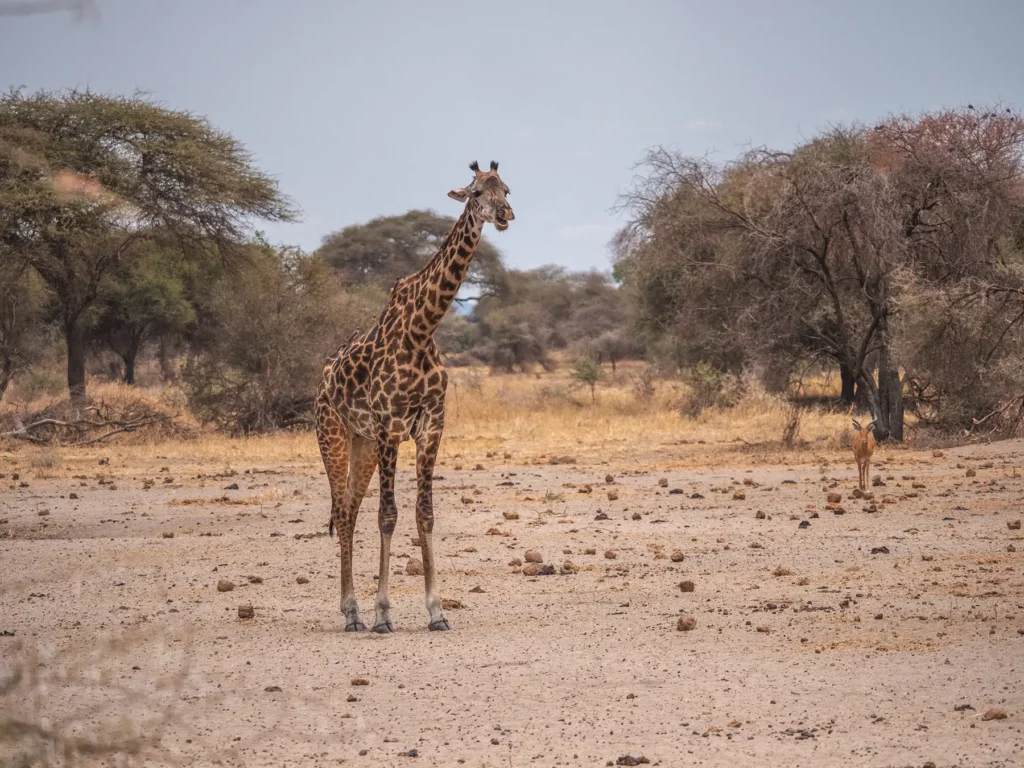
Best Places to Go on Safari in Tanzania in August
Tanzania is a vast country with spectacular parks scattered across the landscape, with each park having its own ecology, personality and beauty. You could spend months in each park and still not get to see all there is to see and experience.
For an overall and satisfying safari experience in Tanzania, there are three iconic national parks you dare not miss.
1. Northern Serengeti (Kogatende)
Situated a stone’s throw from the Kenyan border in the Northern Serengeti, Kogatende is slap bang in the centre of the migration route and exactly where the herds are bound to be during the month of August. It’s no coincidence that there are numerous lodges and camps scattered in this area and the strategically placed airstrip provides easy and quick access to this otherwise remote part of the Serengeti.
Apart from the millions of wildebeest, zebras and antelope species that race past non-stop during the whole month of August, elephants, hippos, buffaloes, rhinos, giraffes as well as all the big cats, hyenas and other smaller predators are all common sightings.
At this time of year, witnessing millions of animals swimming across this crocodile-infested river is often the highlight for many visitors to the Serengeti.
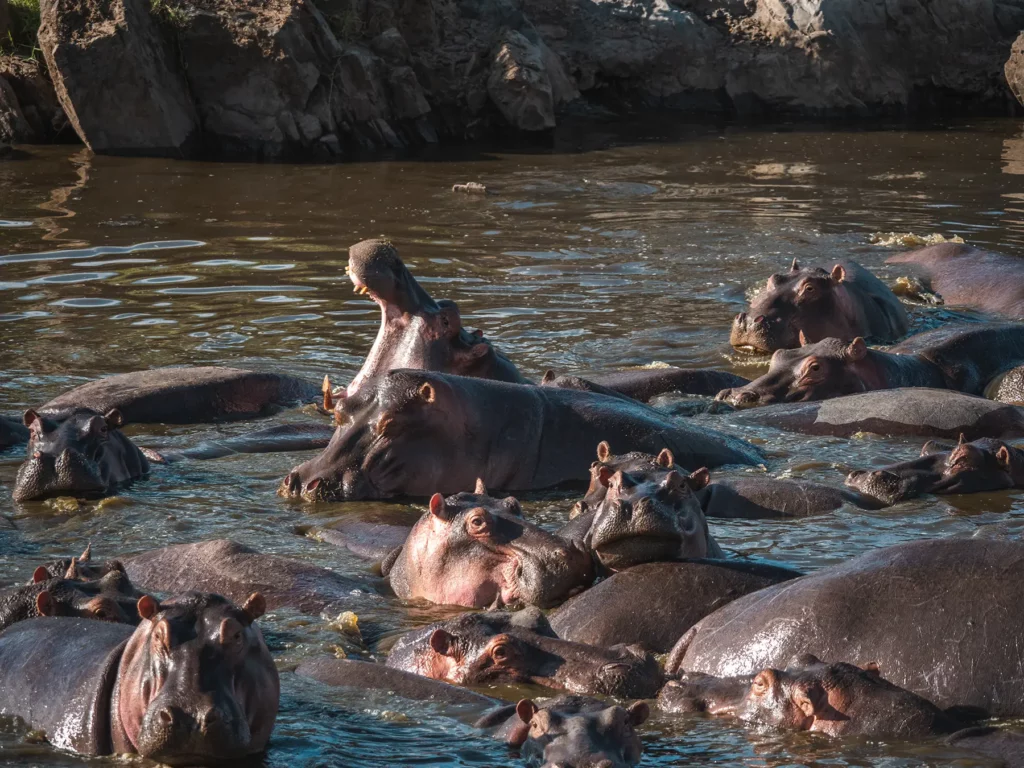
2. Central Serengeti (Seronera)
Situated in central Serengeti, Seronera is also on the Great Migration route, but by the time August arrives, most of the migratory herds of wildebeest, zebras and antelope have long since gone past. But nevertheless, this area has one of the greatest populations of resident wildlife species than anywhere else in the entire Serengeti and remains a popular safari destination all year round.
Among this vast and diverse ecosystem, you can find elephants, buffaloes, hippos, giraffes, waterbuck, impalas, reedbuck, baboons and other primates by the thousand. With so much prey easily available throughout the year, it comes as no surprise that the central Serengeti has the one of the highest concentration of lions, leopards, cheetahs, hyenas and other smaller predators like jackals, several cats and bat-eared foxes in Africa.
Vast open plains dotted with numerous waterholes around which these animals like to hang out, provide excellent opportunities to view successful hunts and often at close range. It also comes as no surprise to find numerous lodges and camps scattered across this region, some of which are perfectly situated so that you can view the game without leaving your lodge.
This area is not only ideal for traditional game drives, but the mild and mostly sunny weather during August makes it an excellent period for hot-air balloon safaris. Although rather costly, viewing wildlife from above provides the ultimate thrill and a truly Out of Africa experience.
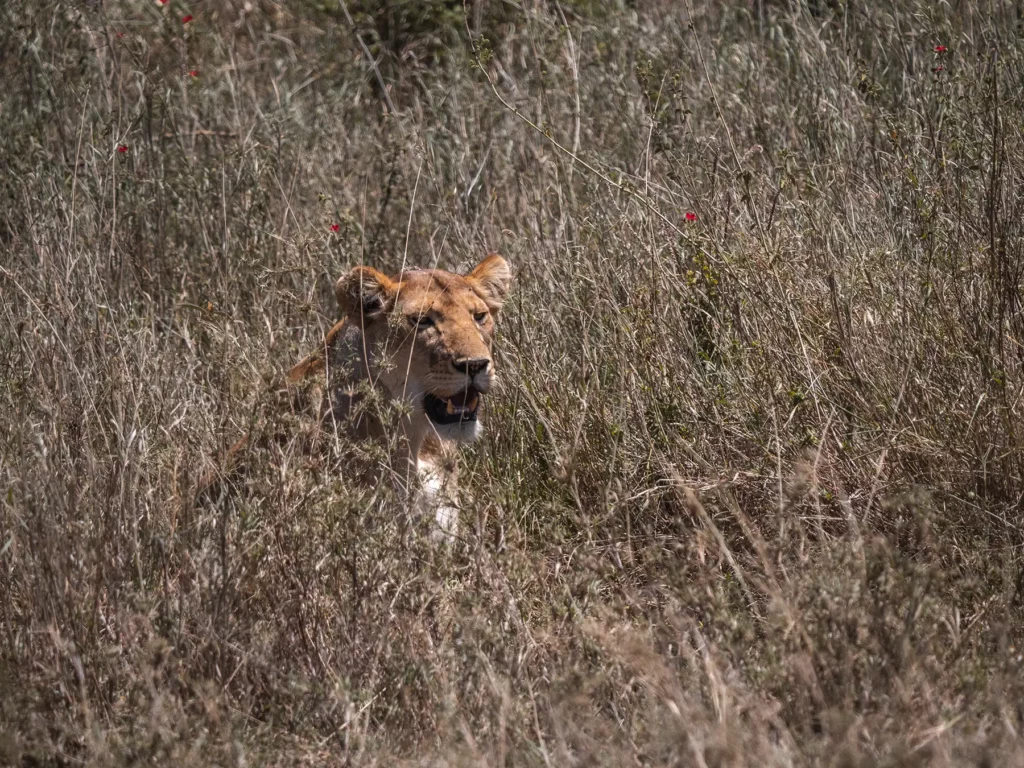
3. Ngorongoro Crater
Regarded as the Eden of Africa, the Ngorongoro Crater is another natural gem of Tanzania that just has to be on top of your list of places to visit in Tanzania.
Along with the iconic Serengeti National Park and Mount Kilimanjaro, Ngorongoro Crater has been declared a Unesco World Heritage Site and once you see it, it’s not difficult to see why.
Spanning 19 kms across from the rim of this ancient volcano crater, you gaze across the 260 km² of pristine wilderness that lies spread out over 600 metres below your feet. Within this natural paradise live over 25,000 animals, including the Big Five (lions, rhinos, elephants, leopards and buffalos) and so much more, except for giraffes and crocodiles.
The highly alkaline Lake Magadi sitting in the middle of the crater floor, is bursting with thousands of water birds and is home to huge colonies of pink flamingos, all adding life and colour to this already magical setting.
No camps or lodges exist in the caldera, but many operate from just outside the rim, offering a wide range of safari options, including walking safaris, which provide an exciting sense of adventure. With such a high concentration of wildlife crammed into a small area, the chances of seeing most of the species on a single game drive are pretty high.
The steep volcano rim makes it impossible for any migration to take place, making Ngorongoro an all year round safari destination. As with all game parks in Tanzania, August is one of the best months to visit Ngorongoro.
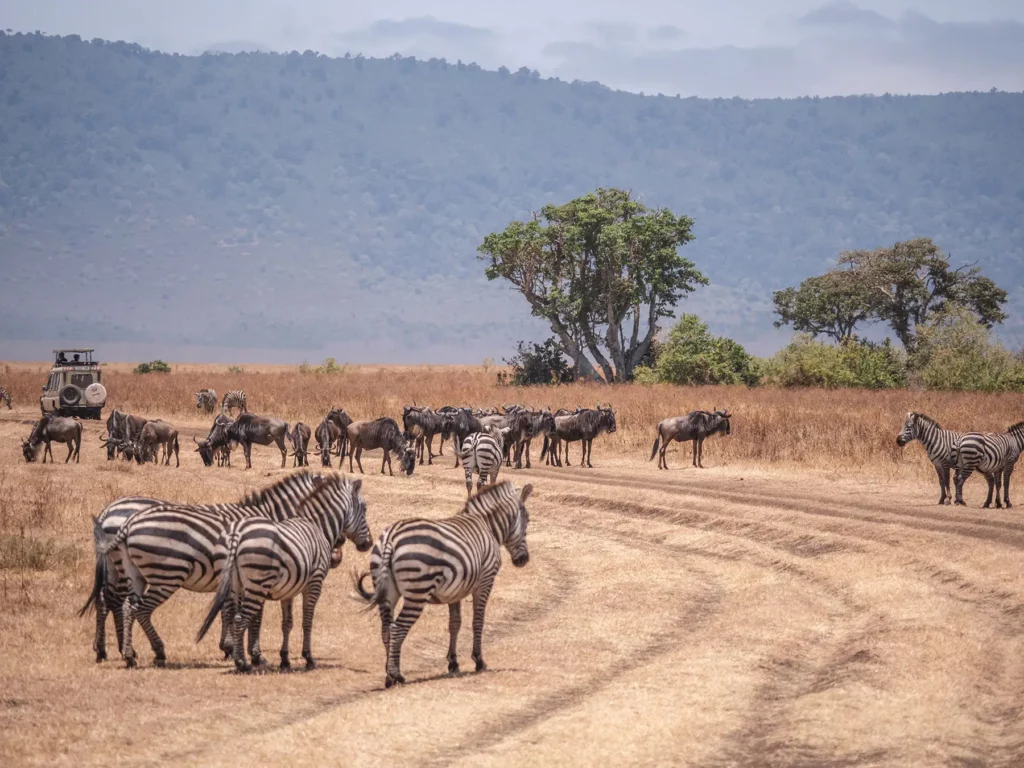
4. Tarangire National Park
Situated not too far south east of Ngorongoro, Tarangire is another magical park that rates among the best safari destinations in Tanzania. This vast 2 800 km² wilderness is home to a vast array of animal species, including the Big Five, although spotting one of Tarangire’s black rhinos is a rare feat.
The stars of this magnificent park are, however, its massive herds of elephants, with some herds reaching over 300 strong. August is a great month to visit Tarangire as the dry weather sends the animals on migration to Tarangire, not as huge as the Serengeti, but spectacular nevertheless. Tarangire is also a birder’s paradise being home to over 500 species of birds.
During this period most animals can be found hanging around the Tarangire River, which runs across almost the entire park. There are a handful of camps and lodges within the park, many of which are situated in close proximity to the river making wildlife spotting that much easier.
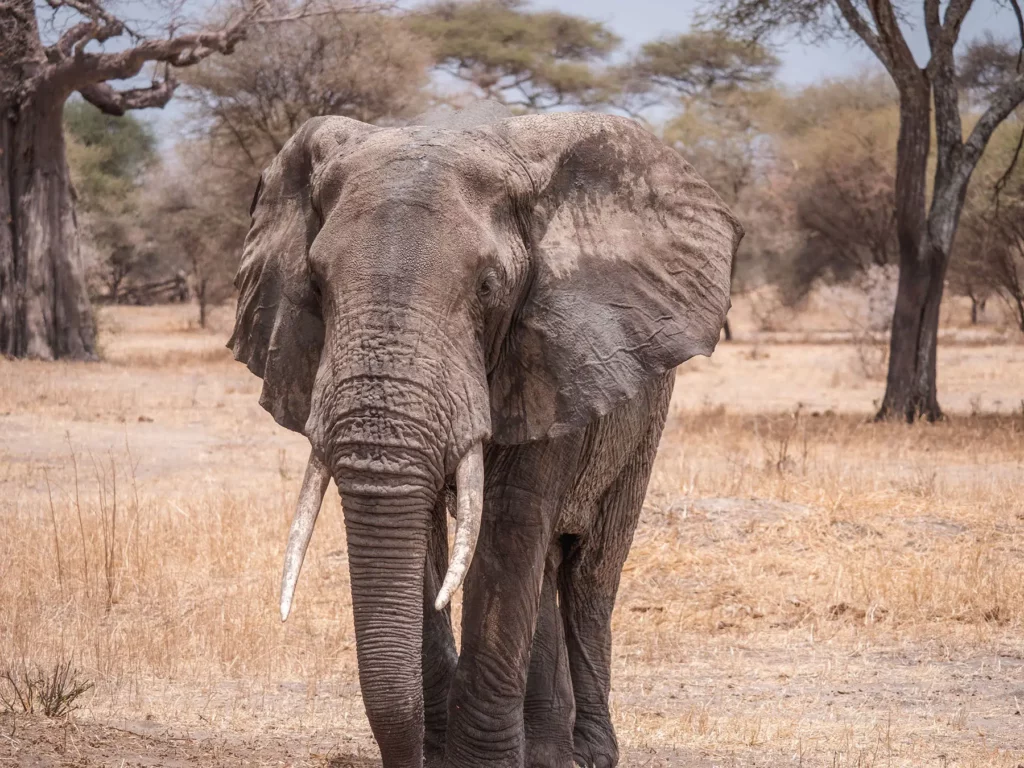
Save Time and Ensure an Incredible Safari Experience
Get quotes from the local safari companies I use to organise my own trips.
You’ll join the rapidly growing tribe of over 1,000 travellers who’ve booked their dream safari using my insider tips and recommendations.
Best Itineraries for Tanzania in January
With so much to see in the three above-mentioned parks, the bare minimum amount of time you could hope to spend in Tanzania is three days. However, considering the amount of money you have spent, the effort taken to get here and the time spent travelling between parks, an itinerary of five days or up to seven to ten days may be more suitable.
Below are my recommended itineraries for visiting Tanzania in August.
7 Day Best of Tanzania in August Itinerary
A 7 Day itinerary will provide ample time to truly enjoy the best of what the three above-mentioned parks have to offer, and still allow two days to relax on the white sandy beaches of Zanzibar.
It is highly recommended that you arrange your safari company to pick you up from the airport and drive you to your destination in their safari truck or use a high end taxi. Avoid driving after dark as the roads become rather sketchy at this time.
Itinerary Map
Itinerary starts in Arusha and ends in Zanzibar.
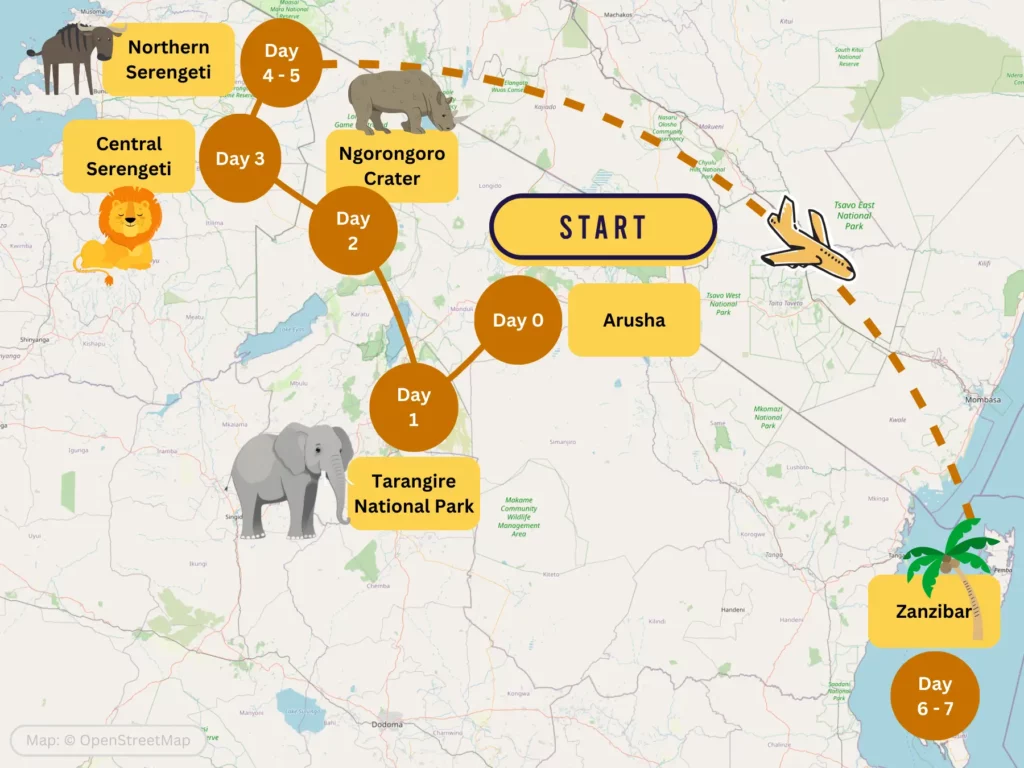
Day By Day Breakdown for my 7 Day January Itinerary
Day 1: Tarangire National Park
Driving time (excluding game drives): 5 hours (3 hours from Tarangire to Arusha and 2 hours from Tarangire to Karatu)
Starting off in Arusha you kick-start your itinerary with a three hour drive to the Tarangire National Park where your first African safari begins.
In Tarangire National Park you can marvel at the park’s huge herds of elephants, iconic baobab trees and plethora of wildlife. Giraffes, buffalos, impalas, baboons and lions are all frequently spotted in this beautiful park.
After a full day of viewing the park’s incredible wildlife, which includes a stop for lunch at a picnic spot, you head north-west and around Lake Mayara to spend the night at Karatu. This is the gateway to the Ngorongoro Highlands.
If you have the budget, you can spend the night on Ngorongoro Crater Rim for spectacular views into the crater and for ease of access the following morning..
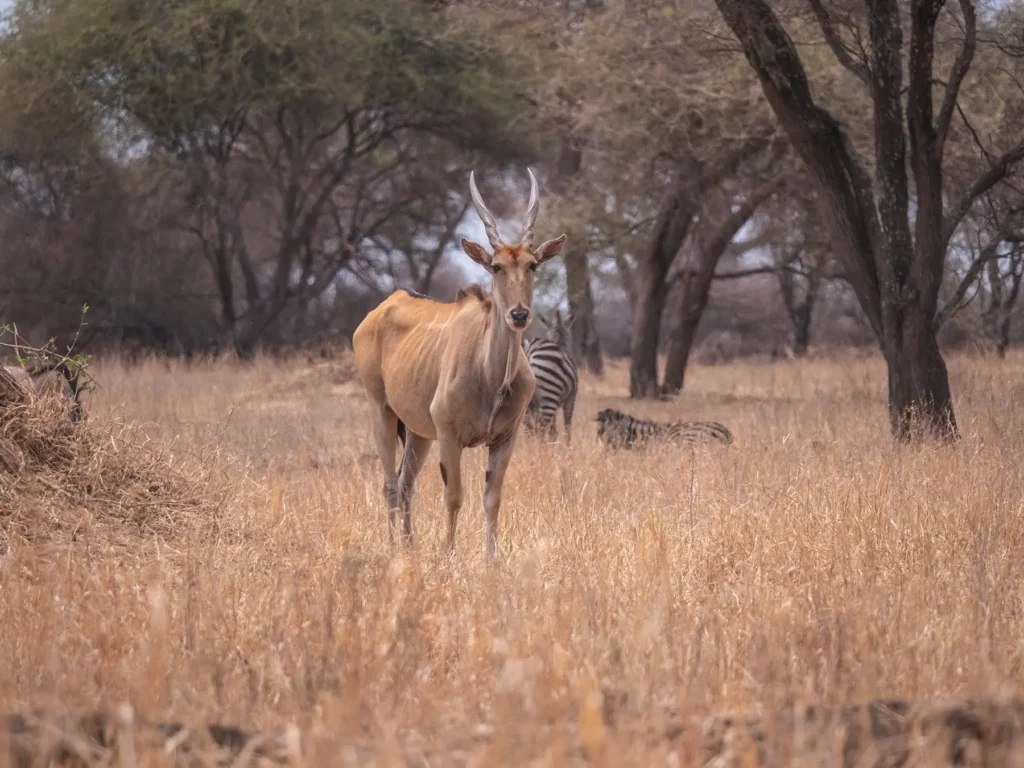
Day 2: Ngorongoro Crater
Driving time (excluding game drives): 5 hours
After breakfast you set off for one of Africa’s Natural Wonders – the Ngorongoro Crater. Ngorongoro Crater isn’t actually a crater but is in fact the caldera of an ancient volcano which collapsed on itself millions of years ago, creating a safe haven for thousands of animals. The crater floor is a wide open plain surrounded by towering crater walls, a unique landscape that you can’t find anywhere else.
After a slow thirty minute ascent to the lip of the crater, you’ll get your first view of the crater floor spread out 610 metres below stretching for 19 kms in the distance. It’s like nothing you have ever seen before! After taking a thousand photos, you then begin your descent into the caldera where you’ll spend the morning surrounded by nothing but wildlife.
Ngorongoro Crater is the best place in Tanzania to try to catch a glimpse of the endangered black rhino. You are more likely to see them in the morning which is why I recommend entering the crater as early as possible.
You’ll have a picnic lunch beside a hippo pool, digging into a delicious meal whilst hippos bellow in the background, before you leave Ngorongoro Crater
You’ll then set off for the iconic Central Serengeti, driving through the Ngorongoro Conservation Area for a couple of hours before entering the famous Serengeti National Park from the south. You’ll drive north within the Serengeti, to the Seronera District in the very heart of the park. It’s here that you will spend the night.
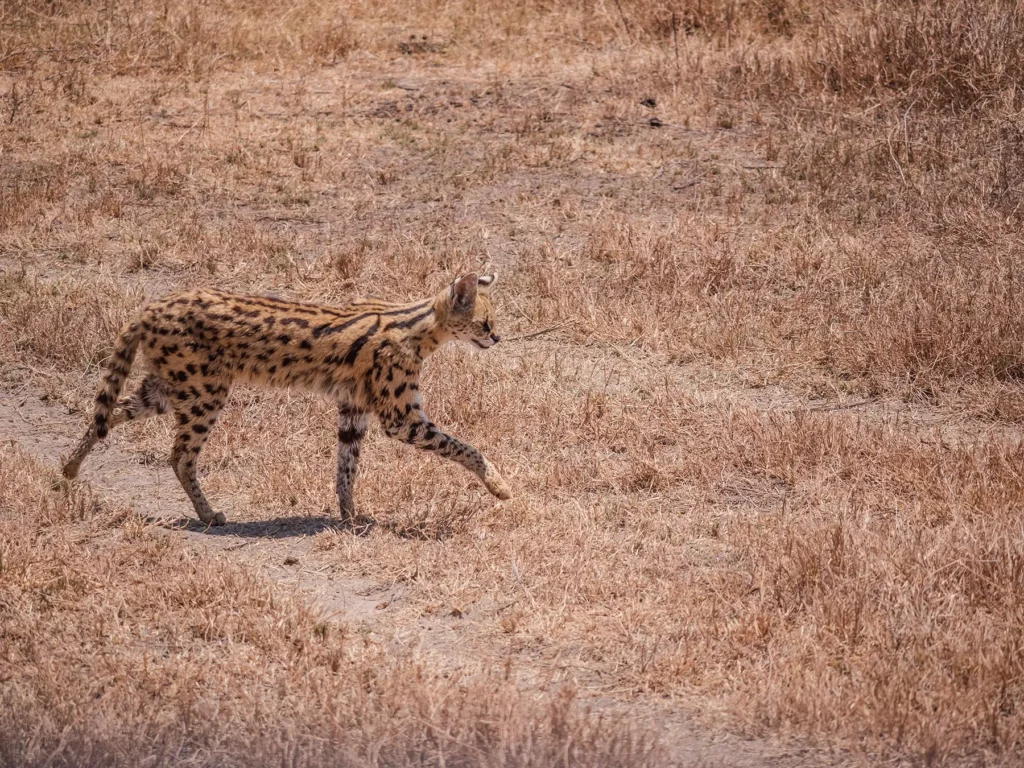
Day 3: Central Serengeti
Driving time (excluding game drives): 0 hours
Here you get to spend the full day out on game drives through this wilderness enjoying the magic wildlife. Despite so many animals having passed through on their annual migration, this region is still teeming with life. The Central Serengeti is renowned for its large number of lions, leopards and cheetahs as well as having a healthy population of elephants, buffaloes, giraffes, buck and baboons.
If you have cash to burn, look no further than taking a hot-air balloon flight across this pristine landscape. You can expect to spend around $500 per person for a balloon trip – yes, a bit pricey but what memories you’ll take back with you!
After enjoying wildlife to your heart’s content, you spend a second night at your lodge.
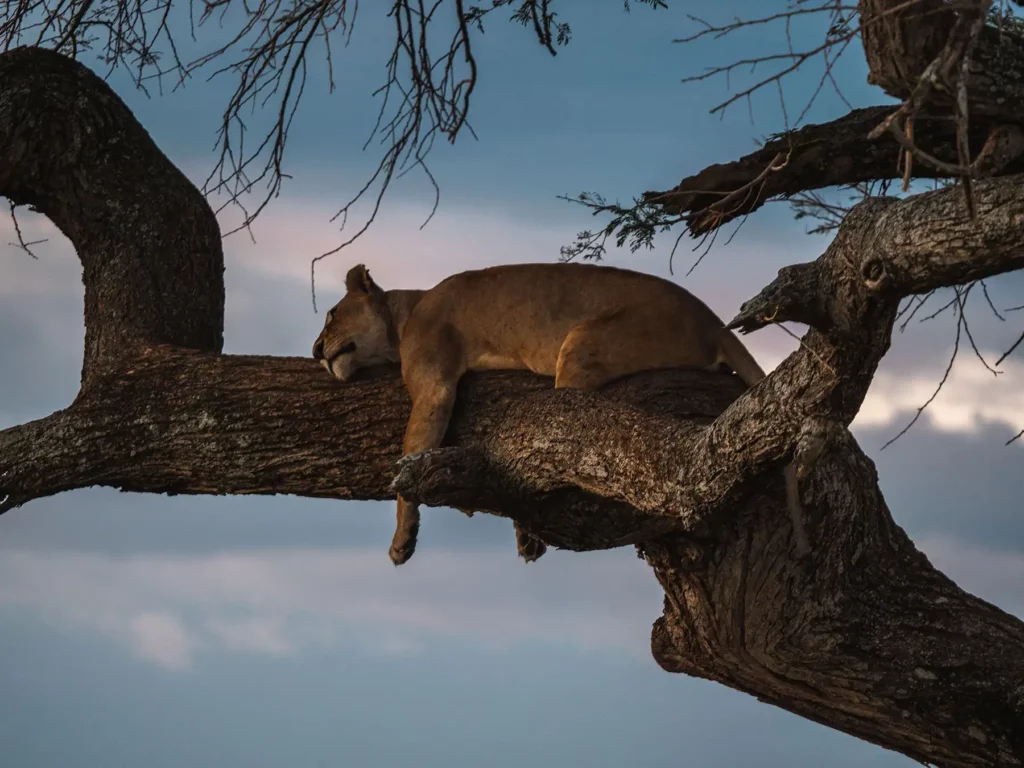
Day 4: Northern Serengeti
Driving time (excluding game drives): 4 hours
After breakfast, you set off for the Northern Serengeti. To cut down on travelling time you could choose to fly from the Seronera airstrip to Kogatende. However, the flight will set you back an extra $400 per person.
If you opt to drive, it will take between 4 and 5 hours. However, driving through the Serengeti is never any chore as you can make a game drive out of it, searching for wildlife as you gradually meander further north.
Once you arrive at your camp, you’ll set off on a full day game drive and get your first taste of the Serengeti, arguably the most famous wildlife sanctuary in the world. In August, the Great Migration is in full swing up here and your safari guide will take you to a view point along the Mara River, for an experience of a lifetime.
Literally millions of wildebeest, zebras and buck run the gauntlet crossing the river while being surrounded and constantly attacked by hundreds of crocodiles. To say it’s chaos or mayhem would be a serious understatement. Stragglers, the injured and the weak, don’t usually make it across, and sad as it may seem, the crocs also need to eat. I suppose, it’s just nature’s way of ensuring that only the strong survive long enough to get to breed.
After enjoying what could be the most exciting day of your trip, you spend the night at your lodge and prepare for the day that lies ahead.
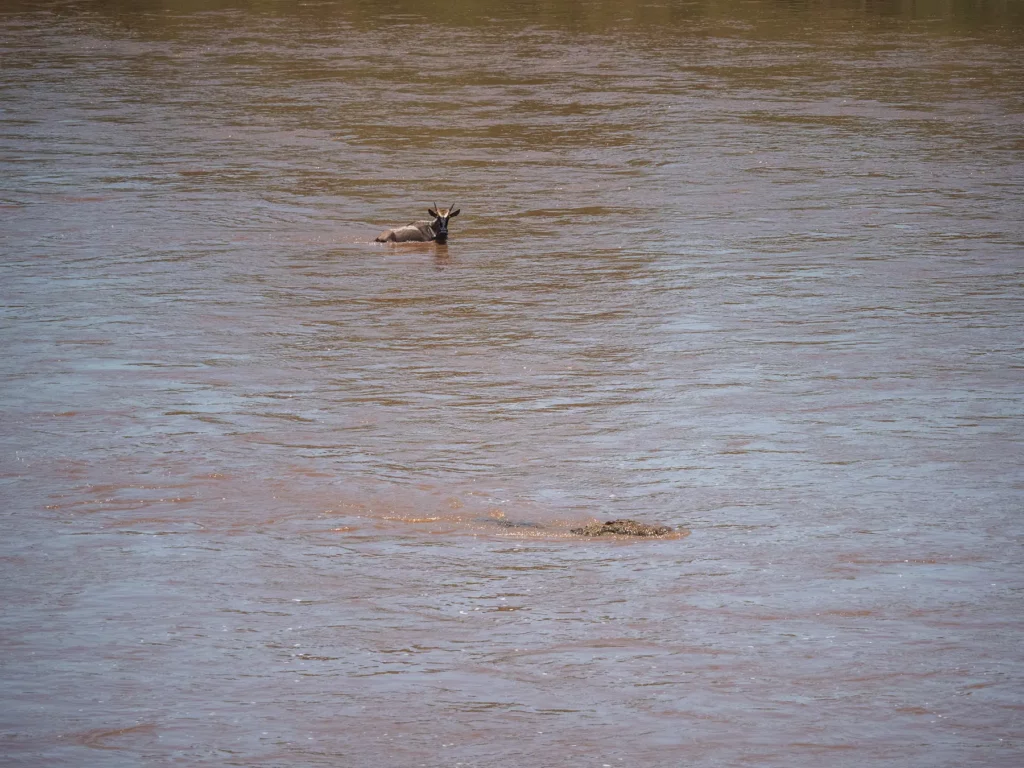
Day 5: Northern Serengeti to Zanzibar
Driving time (excluding game drives): 1 hour (estimated transfer time from Zanzibar airport to your hotel)
After breakfast, you set off once again on a game drive. With so many herbivores passing through with many predators in pursuit, chances of witnessing a big cat kill are good.
In the afternoon you say goodbye to the Serengeti and fly from the Kogatende airstrip to the magical island of Zanzibar where you’ll stay overnight at a beachfront hotel.
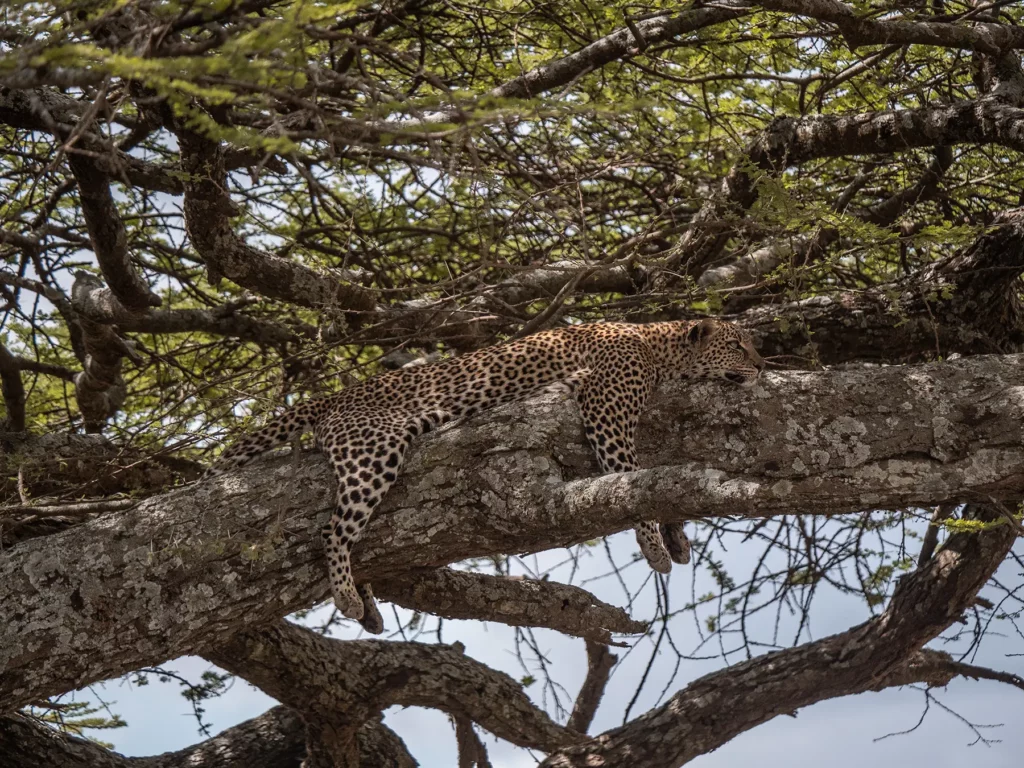
Day 6: Zanzibar
Today you will wake up in paradise. Most beaches in Zanzibar sit overlooking crystal clear waters lap against white-sand beaches.
It’s entirely up to you how you spend the day. You may wish to swim in the ocean, enjoy a spot of snorkelling, book yourself in for some scuba diving or perhaps go on a cultural excursion to the island’s capital of Stone Town.
You will spend another night in Zanzibar.
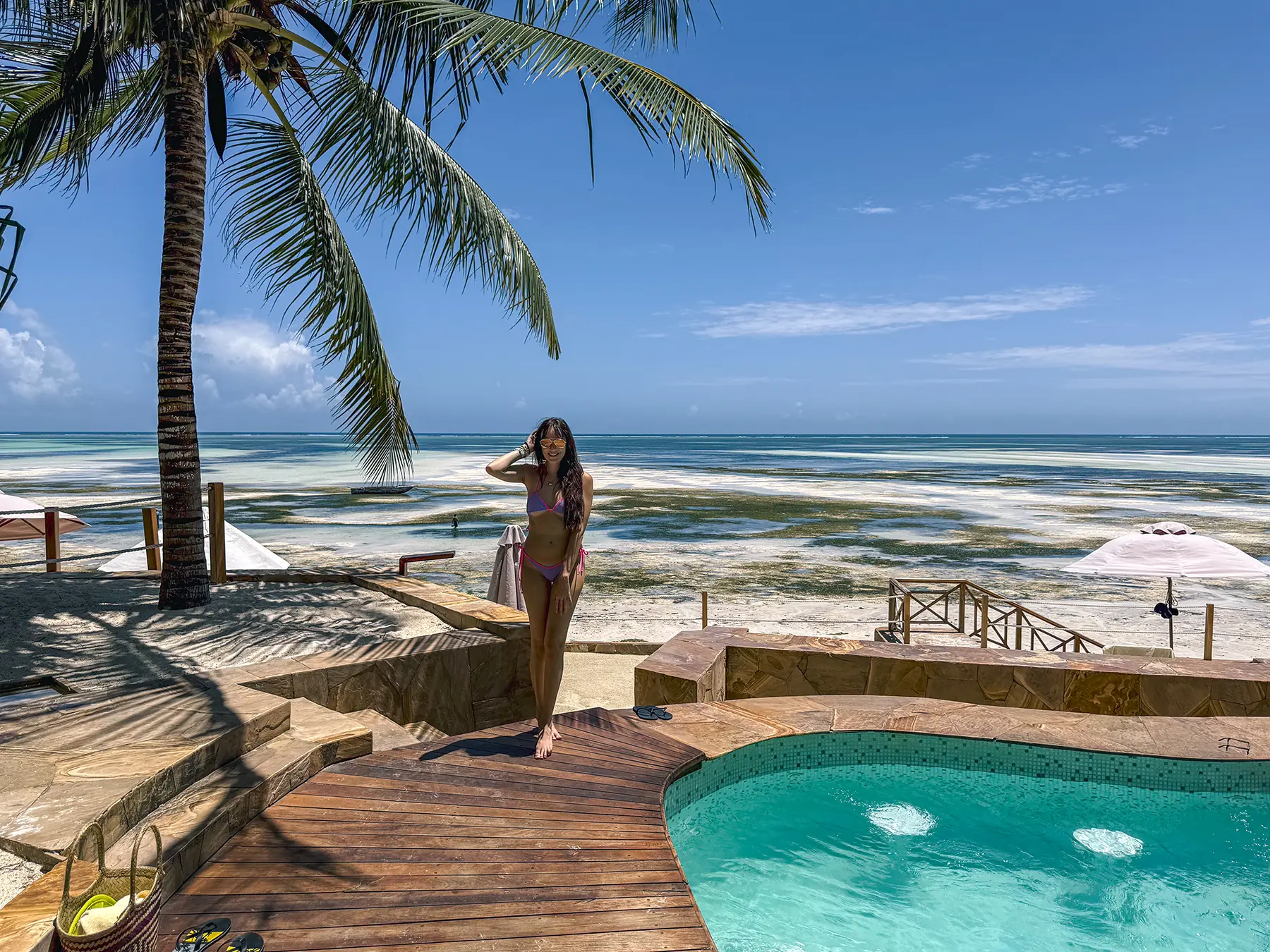
Day 6 – 7: Zanzibar
Driving time (excluding game drives): Dependent on your activities in Zanzibar
Here, the long dusty roads, rugged African bush and the adrenalin rush of being surrounded by wild animals give way to long white sandy beaches, lapped by a calm, soothing and crystal blue ocean and life suddenly slows right down. Options here are plenty.
You could spend the next two days relaxing along the shore, snorkelling in the shallows or scuba diving on the offshore reefs, kayaking, or just chilling on the beach soaking in the sunshine.
You could also spend the morning exploring the historic Stone Town in Zanzibar City, getting lost in its narrow side streets, visiting ancient castles, cathedrals and traditional markets shopping for their famous spices, colourful fabrics or souvenirs.
Stone Town is a fascinating place steeped in history and was the centre of the spice, ivory and slave route, and remains a melting pot of Persian, Indian European, Arab and African cultures to this day. Much of their remnants are still standing in plain sight for all to see. Rock legend Freddy Mercury was born here and you can visit his house in Stone Town.
Once your two day stay in paradise is over, you fly home filled with memories that will stay with you for the rest of your life.
Recommended Booking Options For Your 7-Day Tanzania in August Itinerary
Private Safari
Most popular & best experience – typical prices for this itinerary start from $280 per person per day.
Visit safarisbyella.com for free quotes from trustworthy local tour companies I use to book my own trips.

Group (Shared) Safari – Usually Camping
Good for budget or solo travellers – from $180 per person per day.
My recommended Tanzania tour operators only provide private safaris, however, I’ve listed the best and most similar group options for this itinerary, on SafariBookings below.
The second and third group safari options cover everything apart from Zanzibar, so you’d need to book Zanzibar on the end.
Click the link below to request quotes for the group safari options on the SafariBookings website.
10-Day Group safari which also goes to Lake Manyara NP
7-Day Group Budget Camping Safari Excluding Zanzibar
5-Day Group Budget Camping Safari Excluding Zanzibar
View All My Recomended Group Options Following a Similar Itinerary
5 Day Tanzania in August Itinerary
A five day itinerary is almost identical to the seven day itinerary but is more suited for people who are only interested in viewing the wildlife and skipping out on the Zanzibar experience.
Itinerary Map
Itinerary starts and ends in Arusha.
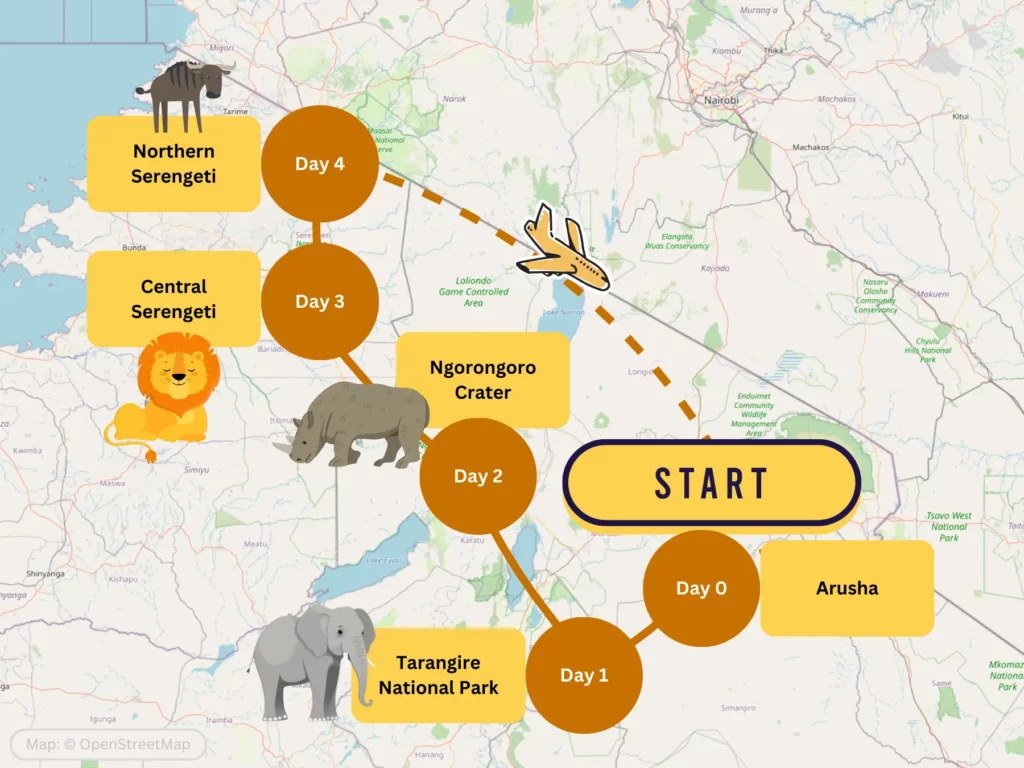
Day By Day Breakdown for my 5 Day August Itinerary
Day 1: Tarangire National Park
Driving time (excluding game drives): 5 hours (3 hours from Tarangire to Arusha and 2 hours from Tarangire to Karatu)
From Arusha, you get driven to Tarangire National Park, where you embark on your first African safari. You get to spend the full day exploring this park, renowned for having the Big Five and some of the biggest herds of elephants found in Africa. There will be time for lunch at a selected picnic spot, before completing your game drive in the afternoon.
You then drive around Lake Manyara and head northwest where you spend the night at Karatu which sits just outside the Ngorongoro Highlands, positioning you for an early morning safari in Ngorongoro Crater the following day.
If your budget permits then I’d highly recommend spending the night on the crater rim rather than in Karatu. Being within the conservation area allows you to be that bit closer to nature and means that the drive to the crater tomorrow will be as short as possible, meaning you can be in the crater early and increase your chances of seeing the rare black rhino.
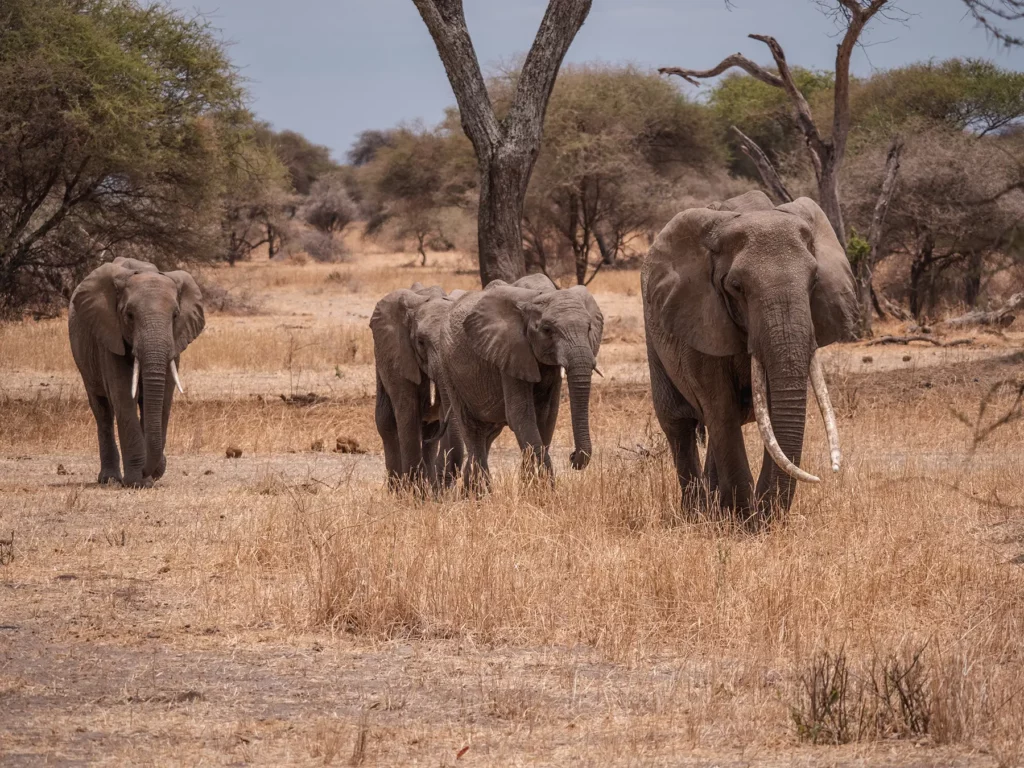
Day 2: Ngorongoro Crater
Driving time (excluding game drives): 5 hours
After breakfast you begin your ascent up to the crater rim and gaze into the volcano crater floor spread as far as the eye can see 610 metres below. This is the Eden of Africa where you can see a plethora of species except giraffes and crocodiles. The steep slope of the crater wall makes it difficult for giraffes to enter the crater. It also prevents most animals from leaving, making Ngorongoro an all year round safari destination.
You then descend into the crater and spend most of the day viewing its diverse wildlife which includes hundreds of bird species, including large flocks of flamingos which feed off the salt Lake Magadi lying almost in the centre of the crater.
You’ll have a picnic lunch overlooking a scenic hippo pool that’s teeming with these bellowing giants.
In the afternoon you leave the crater and set off for the iconic Serengeti National Park. The drive will take around 5 hours and you’ll spend the night in the heart of the park, within the Seronera District.
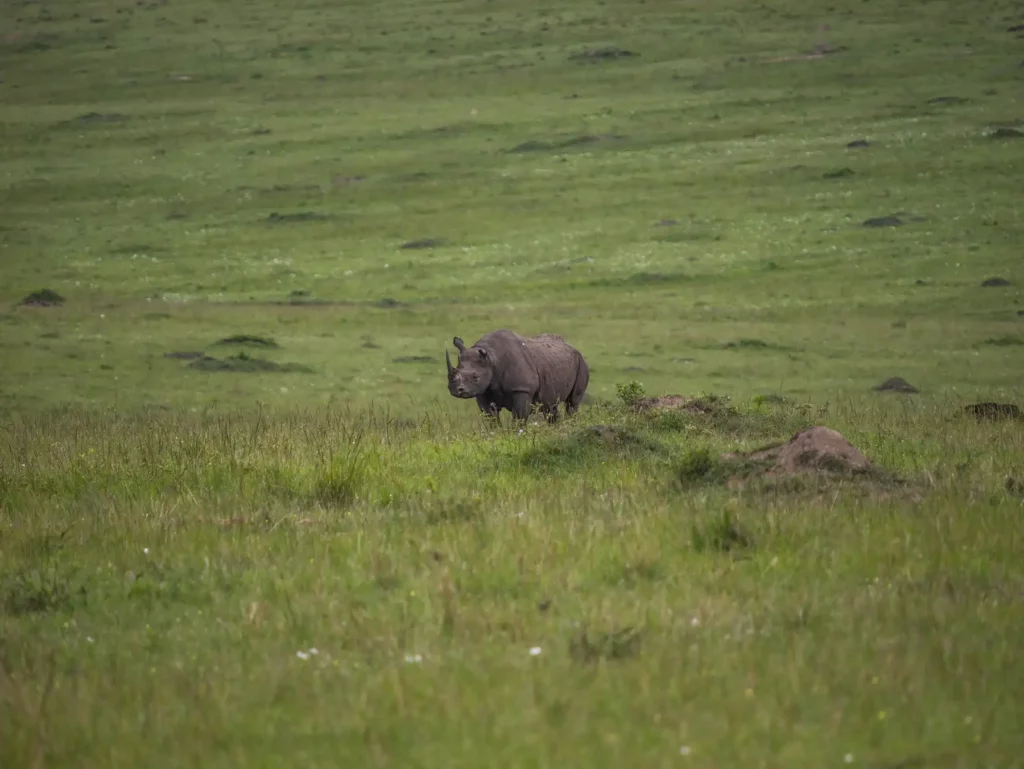
Day 3: Central Serengeti
Driving time (excluding game drives): 4 hours
After breakfast you set off exploring the Central Serengeti, which is renowned for its high population of big cats, plus elephants, buffaloes, giraffes, zebras etc, etc.
Your game drive will take you gradually northwards, ending up in the Northern Serengeti where the world’s biggest land migration is in full swing during August. The great herds of wildebeest are crossing the Mara River at this time of year, contending with strong currents and hungry crocodiles. Watching a crossing can be an exhilarating yet at the same time heart-wrenching experience.
You’ll spend the night in Northern Serengeti.
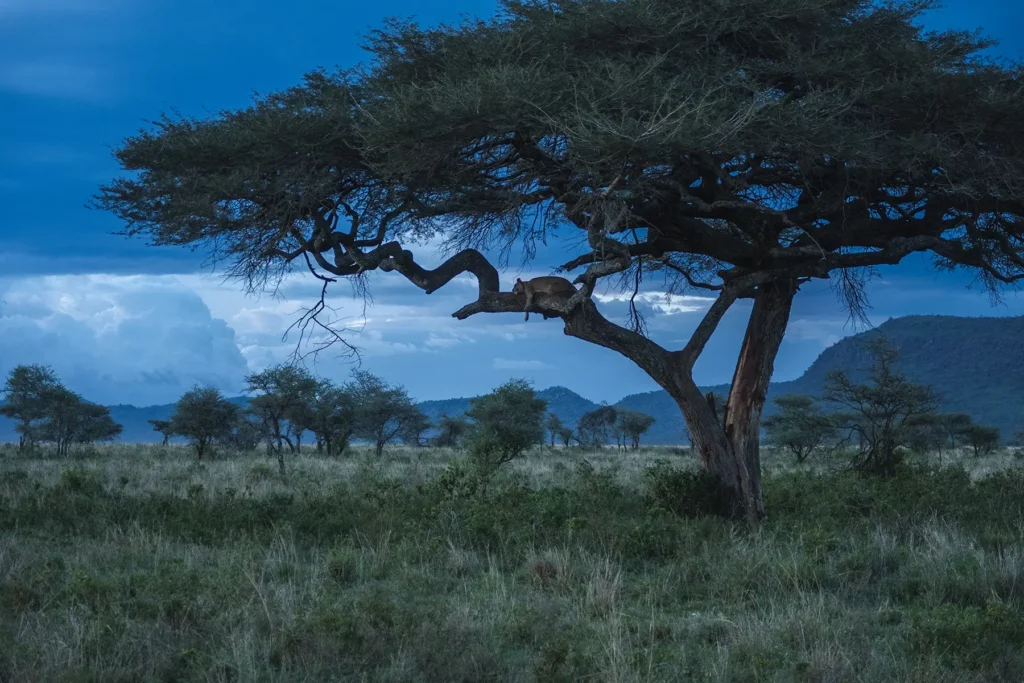
Day 4: Northern Serengeti
Driving time (excluding game drives): 0 hours
Today you have a full day to go on safari in Northern Serengeti. You’ll not be disappointed. With millions of animals moving through this region, attracting every predator there is in Tanzania, you’re bound to come across some incredible sights. None will be more exciting than witnessing the migrating herds of mostly wildebeest and zebras crossing the crocodile-infested Mara River, where mayhem is an understatement.
The arrival of the great herds in the region means that there’s plenty of food for the predators and so you may even be lucky enough to see a big cat in action.
After a full day of the most superb game viewing, you return to your lodge where you stay overnight.
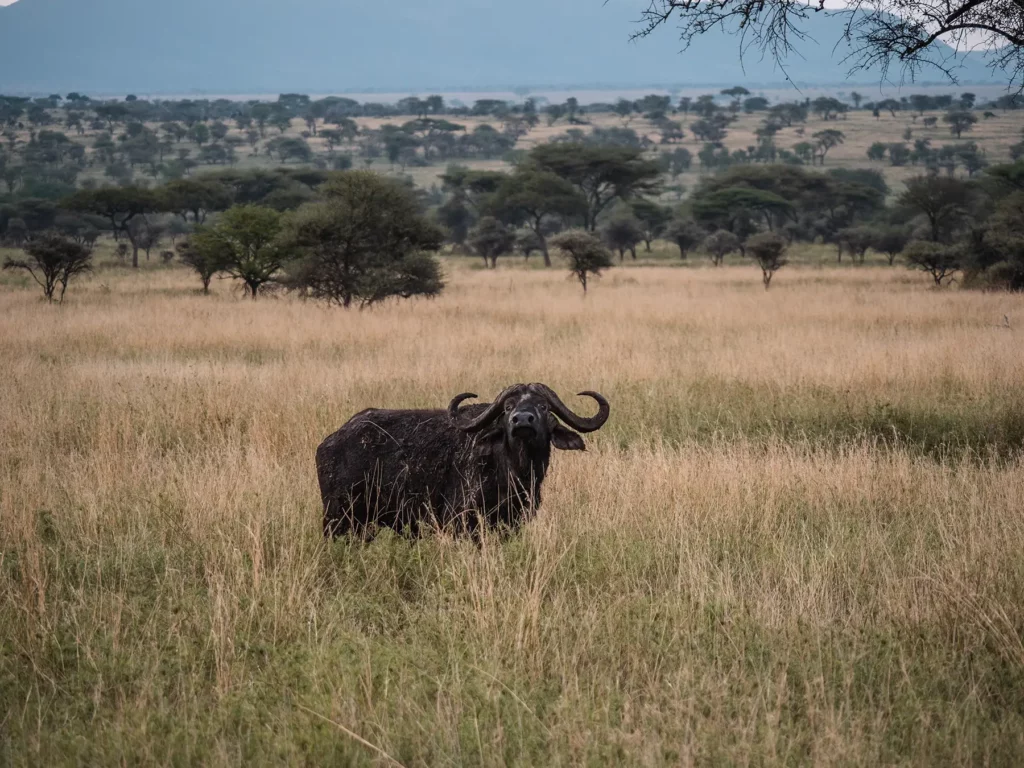
Day 5: Northern Serengeti to Arusha
Driving time (excluding game drives): 8 hour drive or a 1 hour flight
After breakfast you leave the Serengeti for Arusha. There are two options. One option is to drive there which will take approximately seven to eight hours. If spending that amount of time in a vehicle doesn’t sound like a good plan and your budget allows, a quick hour’s flight will get you to Arusha.
I’d personally recommend flying to Arusha as the drive can be quite tiring. A flight will cost you around $300 per person.
Recommended Booking Options For Your 5-Day Tanzania in August Itinerary
Private Safari
Most popular & best experience – typical prices for this itinerary start from $280 per person per day.
Visit safarisbyella.com for free quotes from trustworthy local tour companies I use to book my own trips.

Group (Shared) Safari – Usually Camping
Good for budget or solo travellers – from $180 per person per day.
My recommended Tanzania tour operators only provide private safaris, however, I’ve listed the best and most similar group options for this itinerary, on SafariBookings below.
There are limited group options for this itinerary, so I've also included a some options with a different number of days.
Click the link below to request quotes for the group safari options on the SafariBookings website.
4-Day Group Budget Camping Safari
7-Day Group Budget Camping Safari
View All My Recomended Group Options Following a Similar Itinerary
3 Day Tanzania in August Itinerary
Whilst 5-10 days is in my opinion the optimal amount of time for a safari in Tanzania, if time is short or if budget is tight, you could still experience the magic of the wild and get to explore two of Africa’s most iconic game parks – Serengeti and Ngorongoro National Parks.
And you could not have picked a better month than August to do that.
Itinerary Map
Itinerary starts and ends in Arusha.
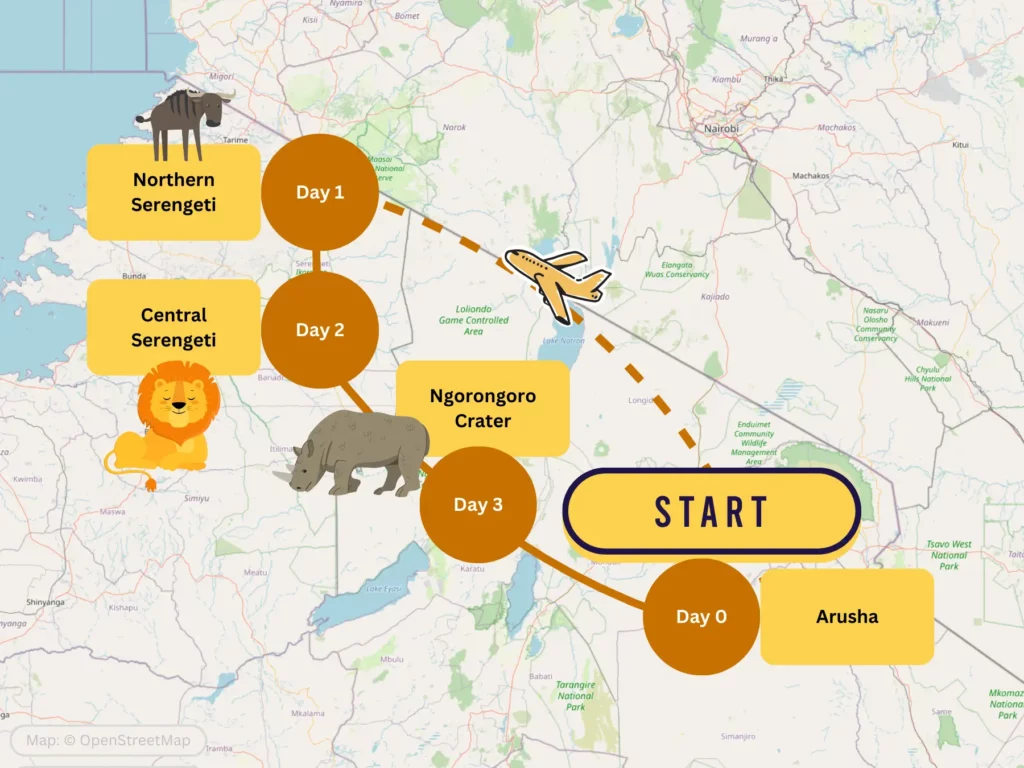
Day By Day Breakdown for my 3 Day August Itinerary
Day 1: Northern Serengeti
Driving time (excluding game drives): 30 minutes (drive to Arusha airport. You’ll then fly to Northern Serengeti)
Without wasting any valuable time, the day starts with a short one hour flight from Arusha to Kogotende airstrip in the Northern Serengeti.
You will then spend most of the day on a game drive, viewing the diverse wildlife and searching for the famous Big Five. The Great Migration is in full swing in August, and you’ll undoubtedly spend some time parked along the Mara River banks witnessing the massive herds of wildebeest, zebras and various bucks crossing the crocodile-infested river. Apart from the river crossing, the rest of the landscape is jam-packed with life too, from big cats to elephants, hyenas to giraffes.
Weary but excited, you spend the night at your lodge.
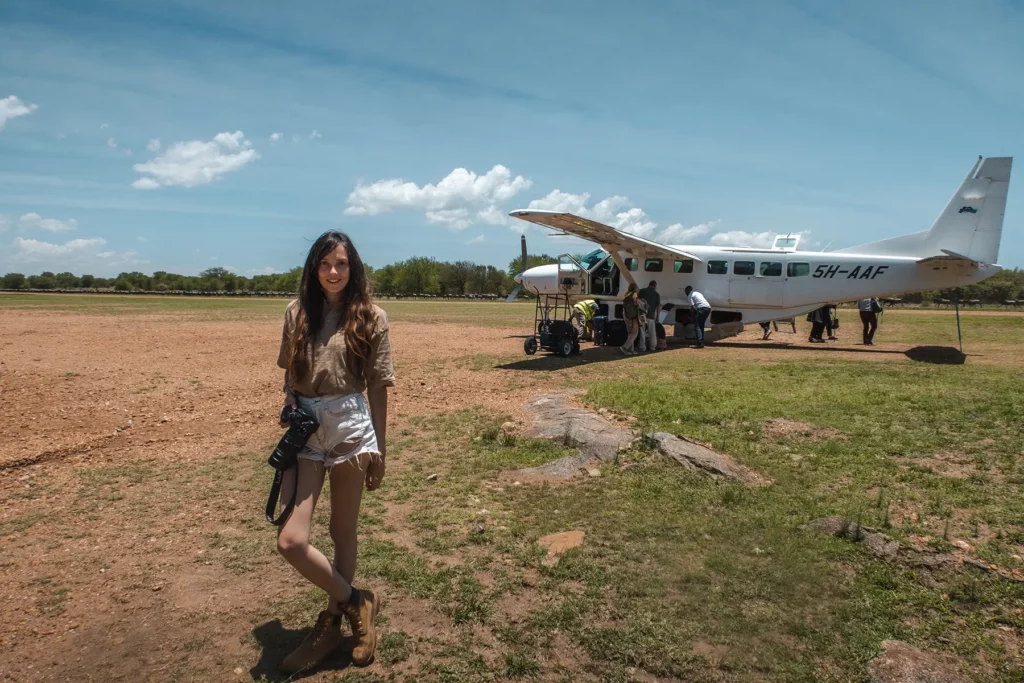
Day 2: Central Serengeti
Driving time (excluding game drives): 4 hours
Your second day starts with another game drive through the park, gradually moving southwards towards the Central Serengeti. This area is renowned for its large numbers of lions, leopards and cheetahs as well as the smaller cats like the serval and other predators too.
This is an excellent area to take a ballooning safari, getting to view the vastness and beauty of the Serengeti from high above – a truly unforgettable experience.
You’ll spend the night at a lodge in the Seronera area in the Central Serengeti.
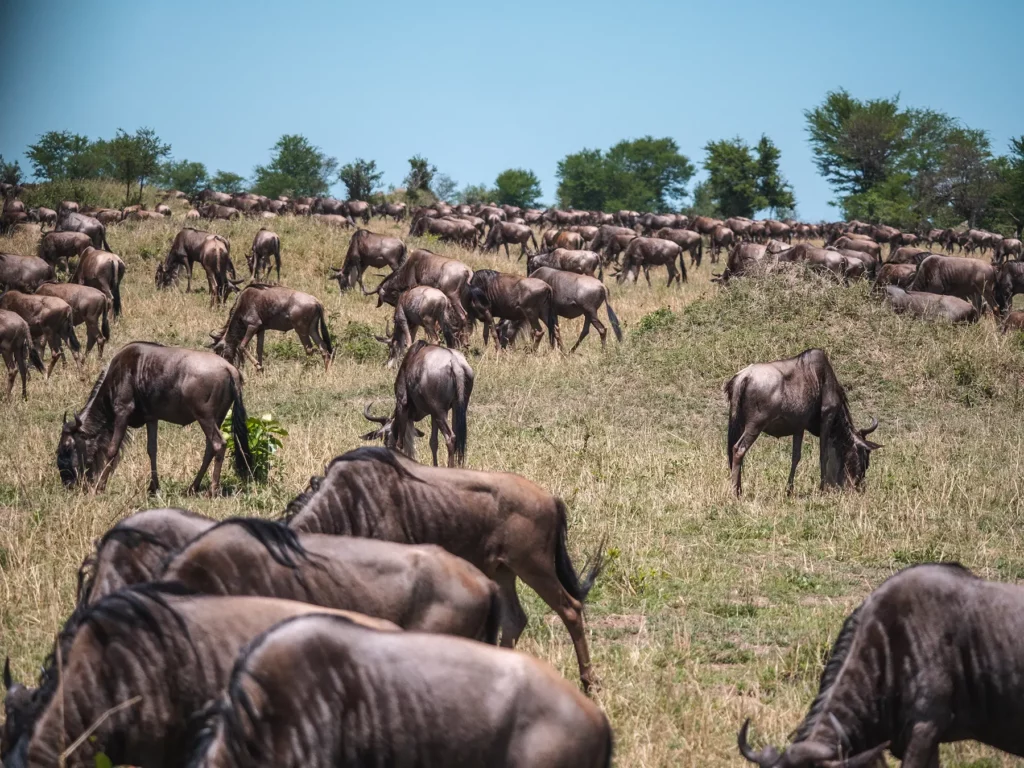
Day 3: Ngorongoro Crater
Driving time (excluding game drives): 7 hours (around 3.5 hours from Central Serengeti to Ngorongoro crater and another 3.5 hours to Arusha)
Your last day begins with a 100 km or so drive to Ngorongoro Crater, which is so unique and beautiful, it is dubbed the Eden of Africa.
Your Ngorongoro experience starts with a steep ascent up to the crater rim. The drive is scenic, meandering through the Ngorongoro Highlights, passing large groups of giraffes on route. You’ll then be greeted with a panoramic view of the volcano crater, stretching 19 kms across with the lush crater floor bustling with over 25,000 animals.
You spend most of the day exploring the crater floor with its diverse wildlife. Ngorongoro Crater is the best place in Tanzania to search for black rhinos. The crater is also home to the highest density of lions in Africa, herds of elephants, buffalos and so much more.
After your game drive you’ll begin your journey back to Arusha in the afternoon.
Recommended Booking Options For Your 3-Day Tanzania in August Itinerary
Private Safari
Most popular & best experience – typical prices for this itinerary start from $280 per person per day.
Visit safarisbyella.com for free quotes from trustworthy local tour companies I use to book my own trips.

Group (Shared) Safari – Usually Camping
Good for budget or solo travellers – from $180 per person per day.
My recommended Tanzania tour operators only provide private safaris, however, I’ve listed the best and most similar group options for this itinerary, on SafariBookings below.
Budget group options will opt to drive rather than fly to the Serengeti. As such they will usually only reach central Serengeti rather than Northern Serengeti and Mara River crossing.
Click the link below to request quotes for the group safari options on the SafariBookings website.
3-Day Budget Camping Group Safari Option 1
3-Day Budget Camping Group Safari Option 2
3-Day Budget Camping Group Safari Option 3
View All My Recomended Group Options Following a Similar Itinerary
Final Thoughts
As you have probably fathomed out by now, Tanzania is a vast country, rich in wildlife, fascinating cultures, history and natural beauty. But apart from all that I have covered here, there are so many other places to see and experience. Whether you’re travelling solo, as a couple, in a group or as a family, Tanzania has something for everyone.
If wildlife is your passion, there is no better month to visit Tanzania than in August, even if it’s just to witness the marvel of the Great Wildebeest Migration crossing the Mara River, a spectacle that is worth the trip entirely on its own.
Read More Tanzania Guides
For an overview of planning your safari, you can read my Ultimate Tanzania Safari Guide.
Tanzania Itineraries
Recomended itineraries and how to book them.
7-10 Day Tanzania Safari Itinerary & Costs
5-Day Tanzania Safari Itineraries & Costs (6 unique Itineraries)
3-Day Tanzania Safari Itinerary & Costs
2-Week Tanzania & Zanzibar Safari Itinerary & Costs
3-Week Tanzania Safari Itinerary & Costs
10-Day Tanzania Honeymoon Itinerary & Costs
Tanzania and Kenya Itineraries
Multi-country itineraries and how to book them.
10-Day Kenya and Tanzania Safari Itinerary
2-Week Kenya & Tanzania Safari Itinerary
Costs & Planning
How to get the most bang for your buck and the best time of year to visit depending on what you want to do and see.
Tanzania Safari Cost – Everything You Need to Know!
The Great Wildebeest Migration Guide
Zanzibar Island – The Complete Guide
National Parks & Reserves
Complete guides to the best and most famous safari reserves, including the wildlife you’ll see, entrance costs and best time to visit.
Other Popular Safari Destinations
How to Book Your Safari
Save time and ensure an incredible safari experience by getting quotes from my recommended local safari companies.
Join the rapidly growing tribe of over 1,000 travellers who’ve booked their dream safari using my insider tips and recommendations.
